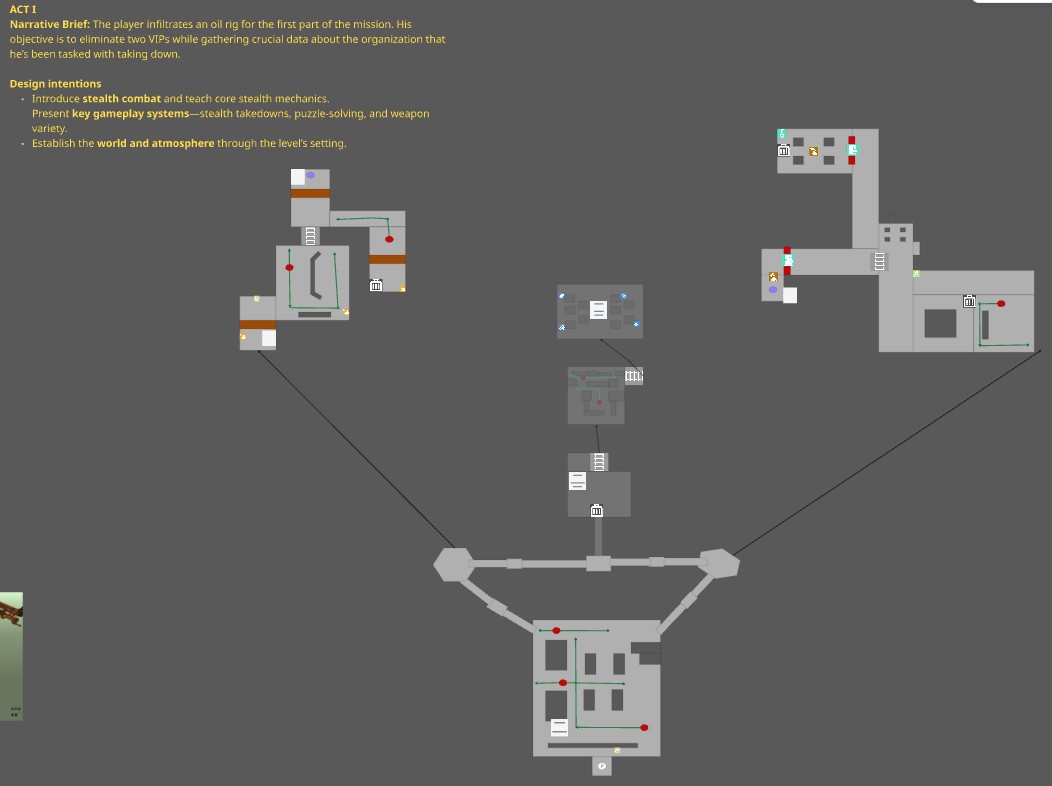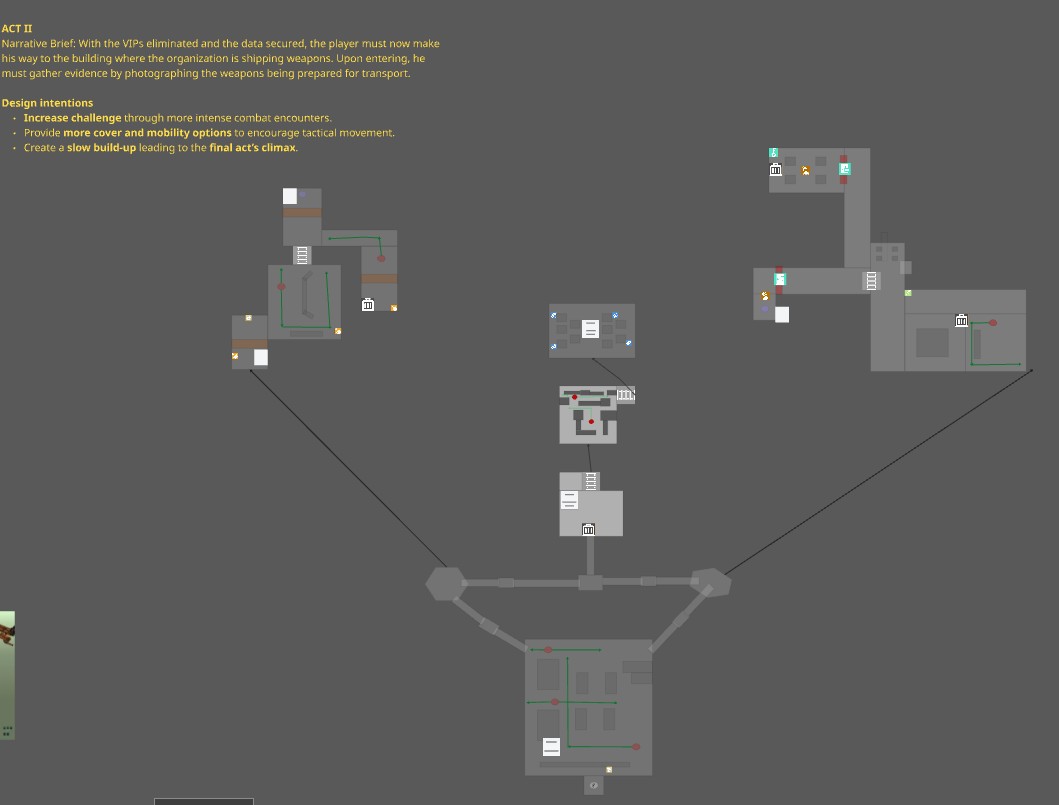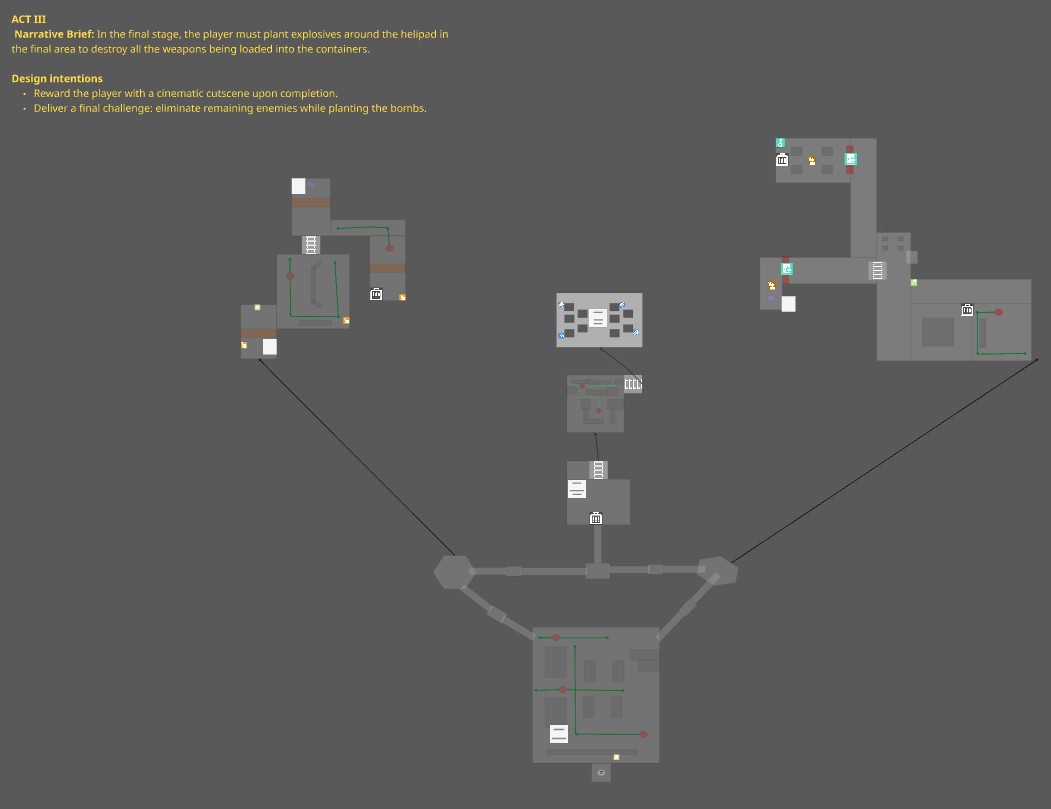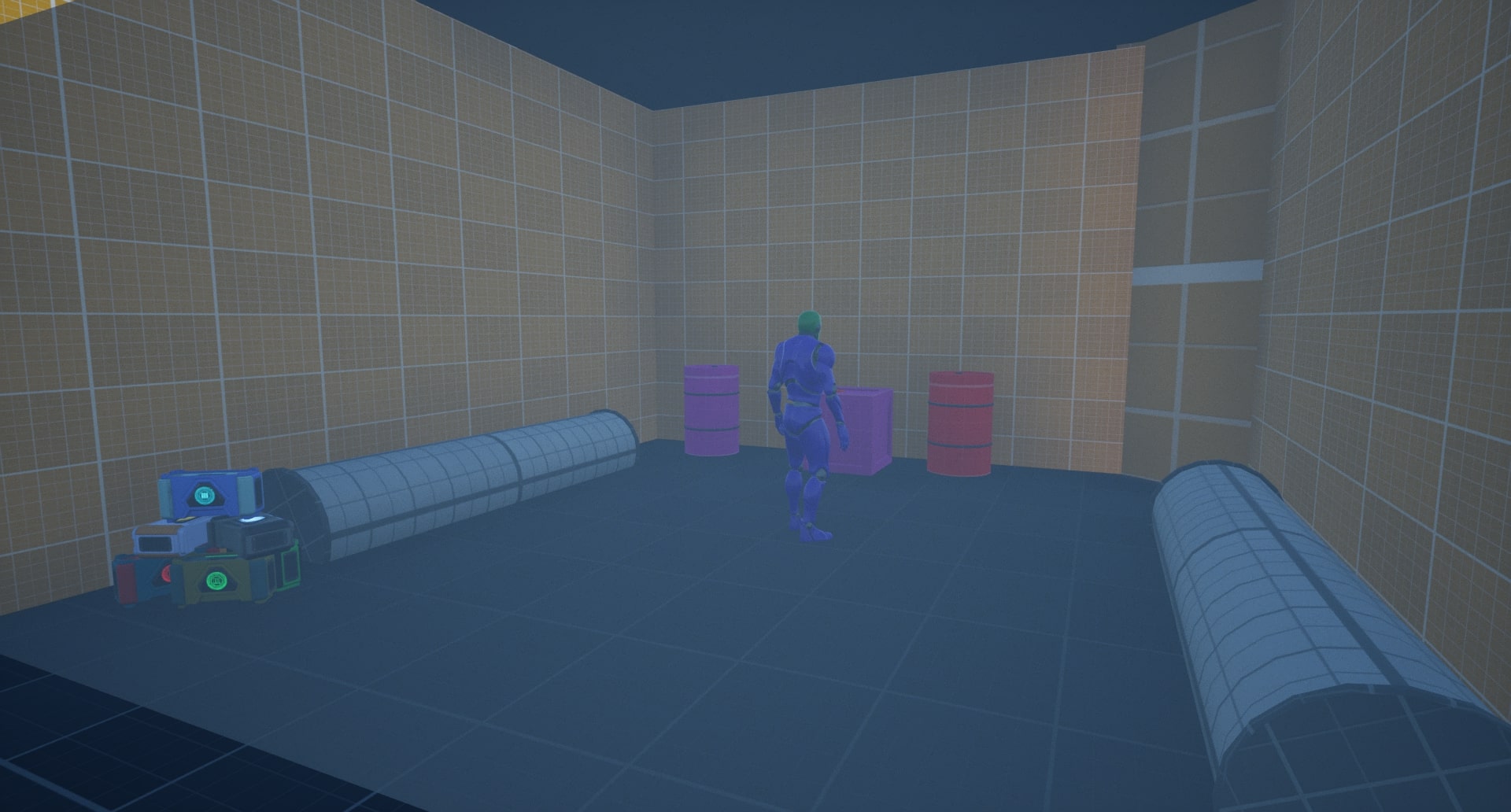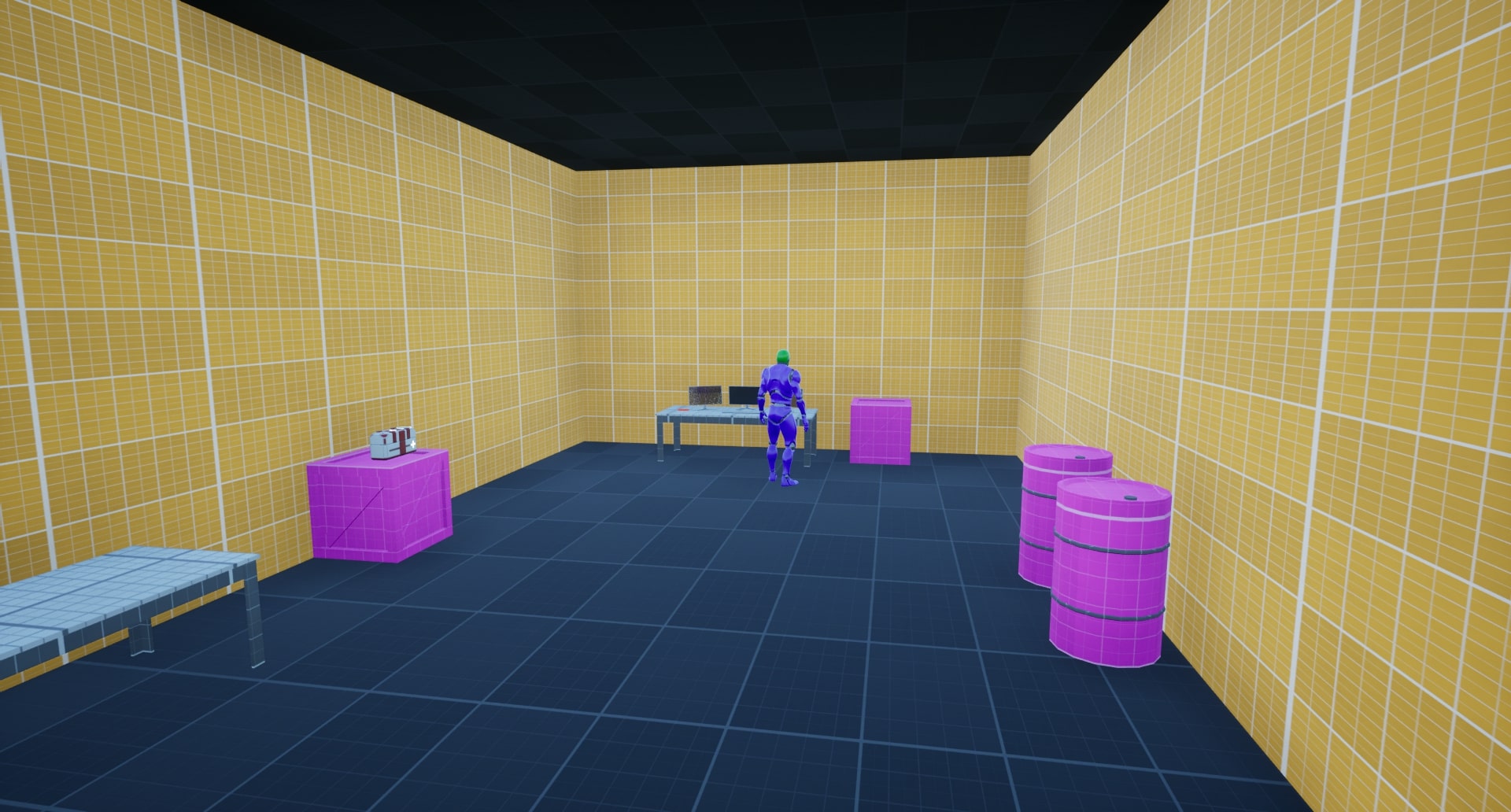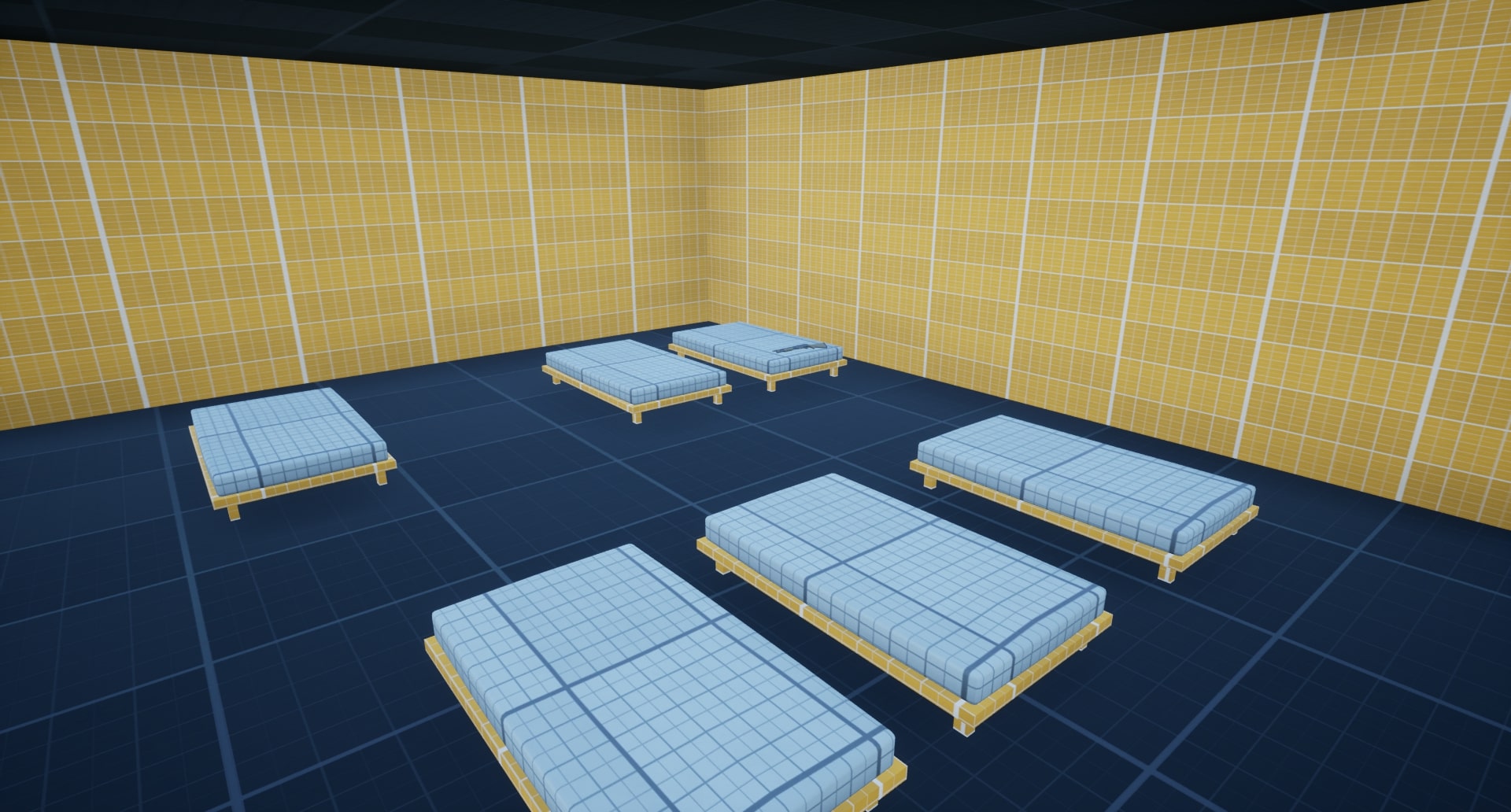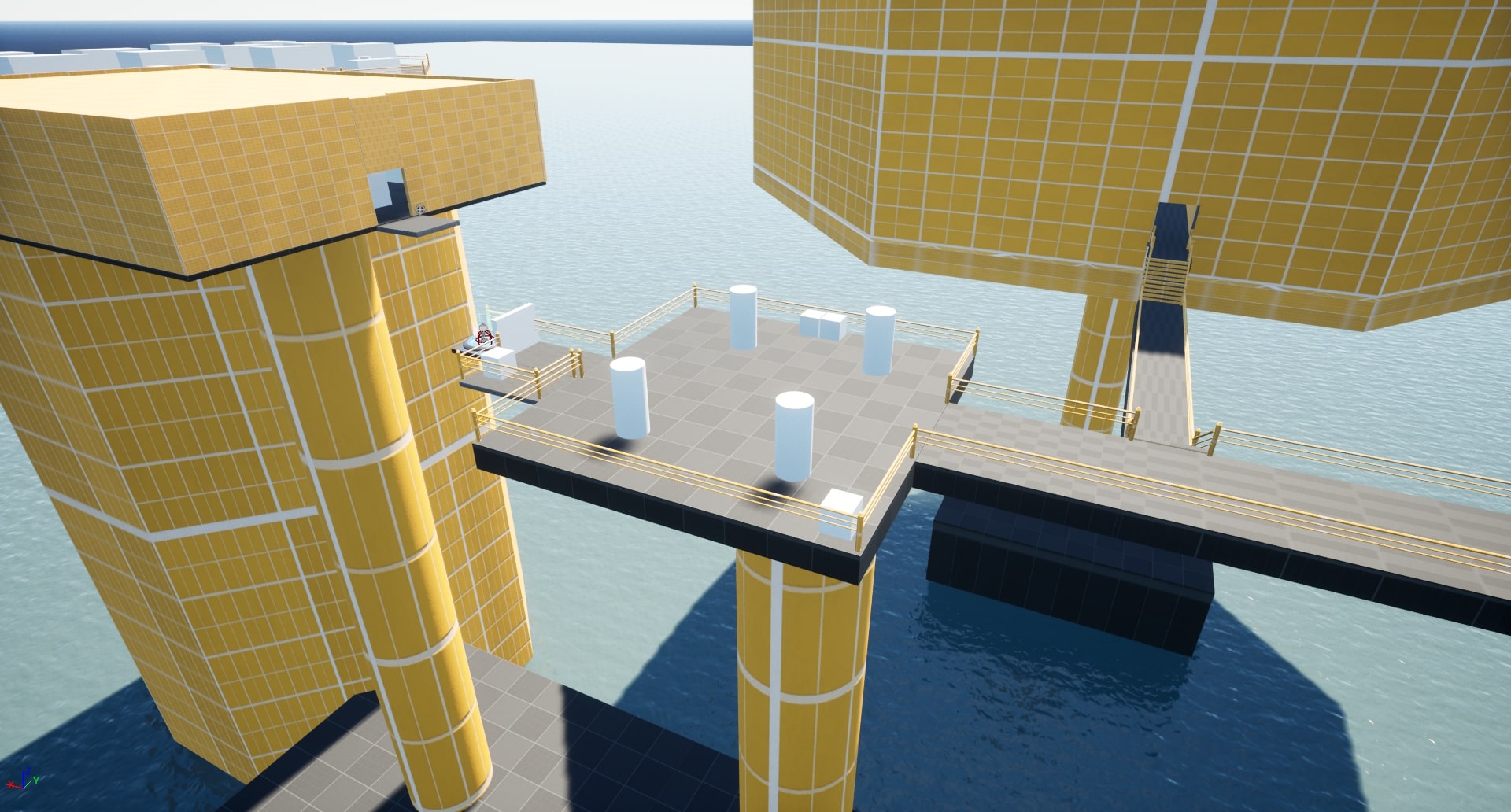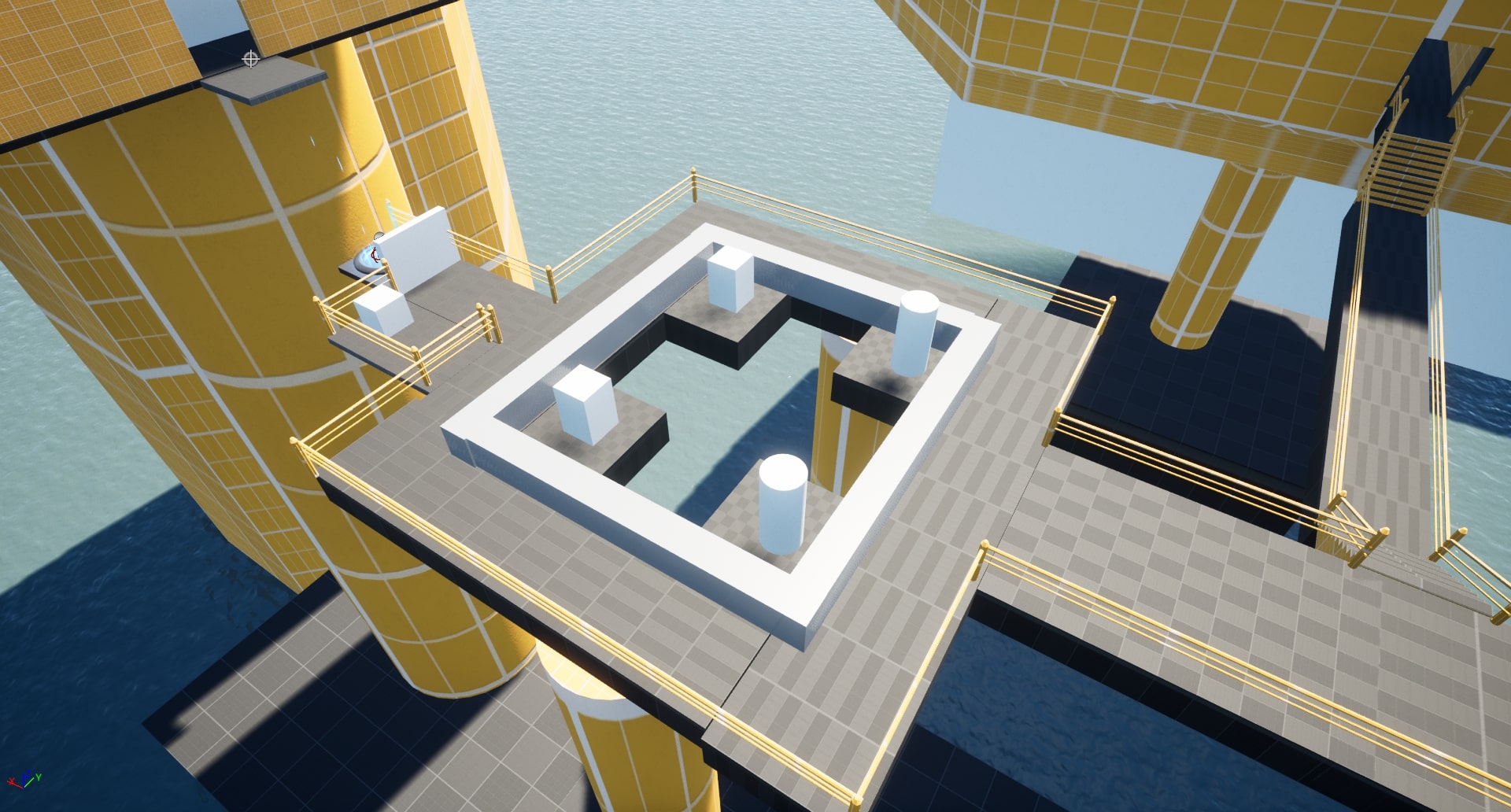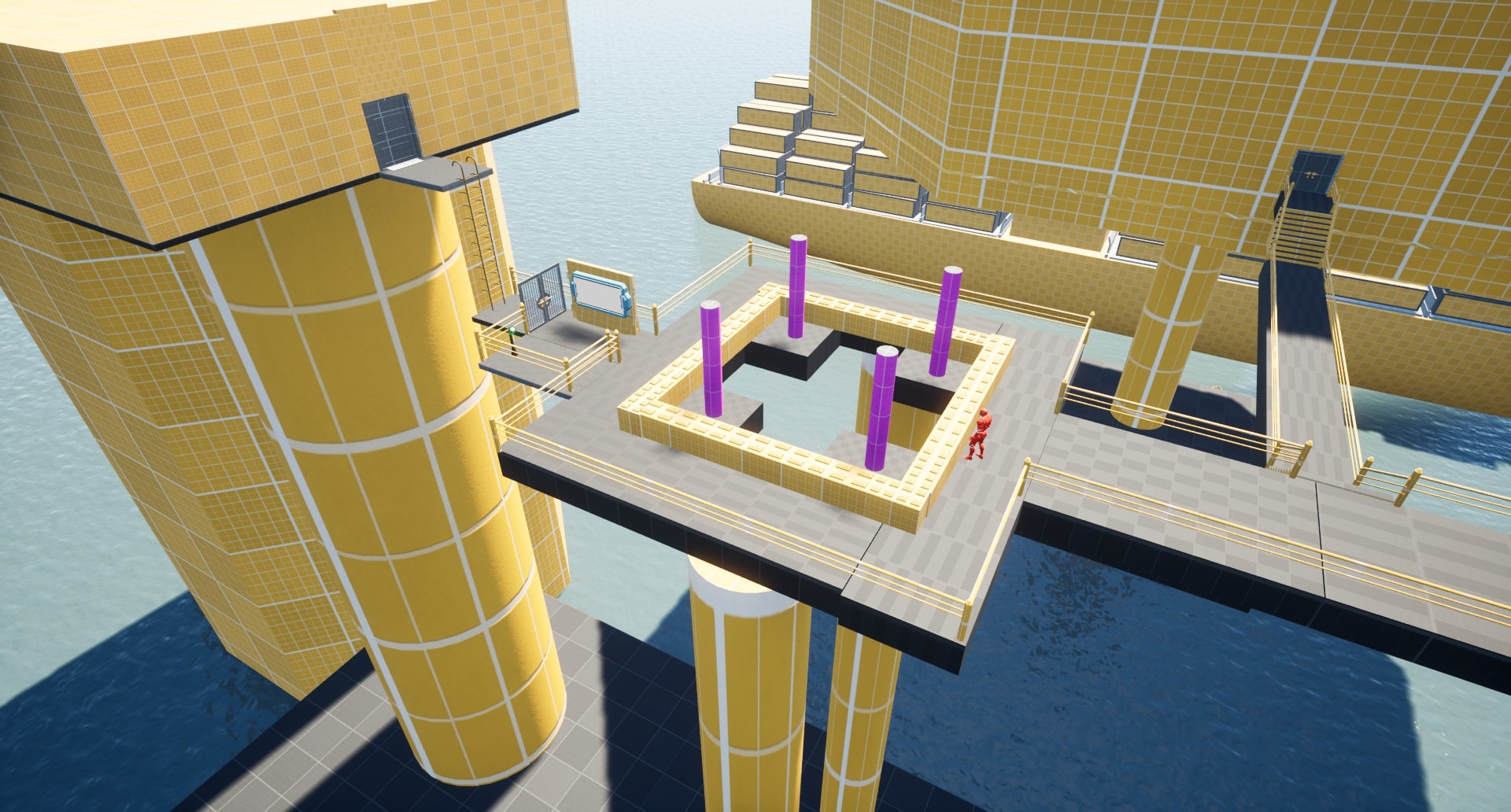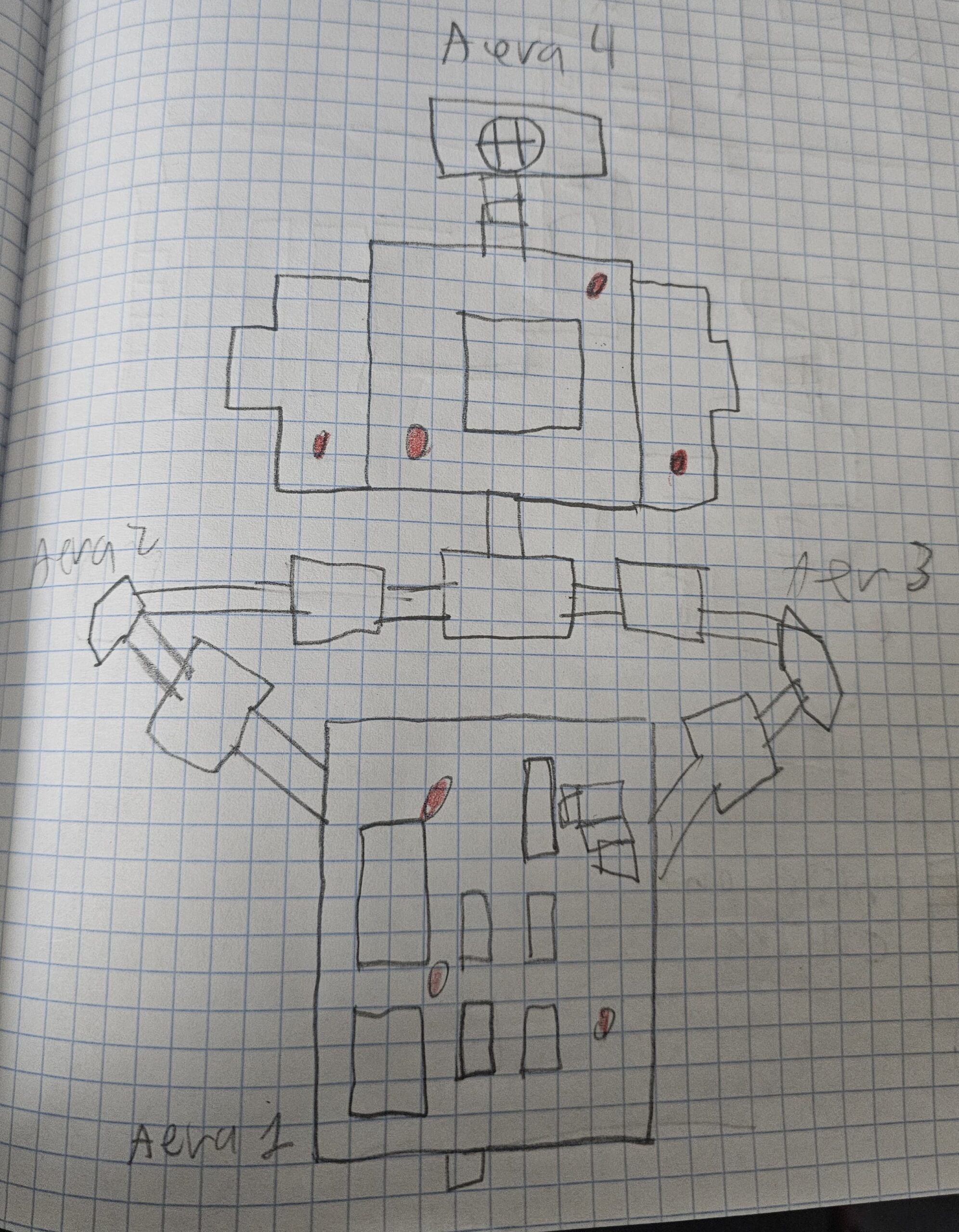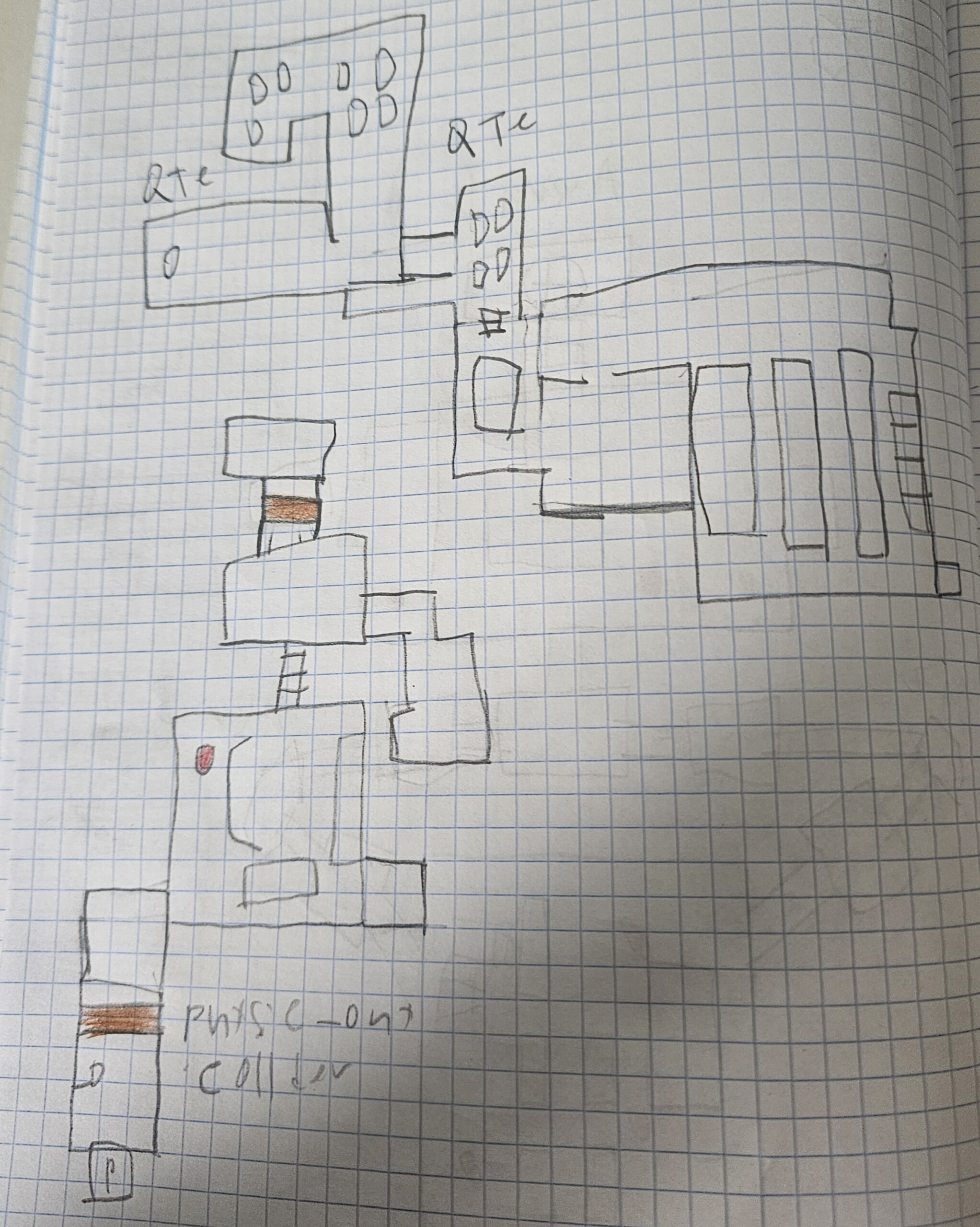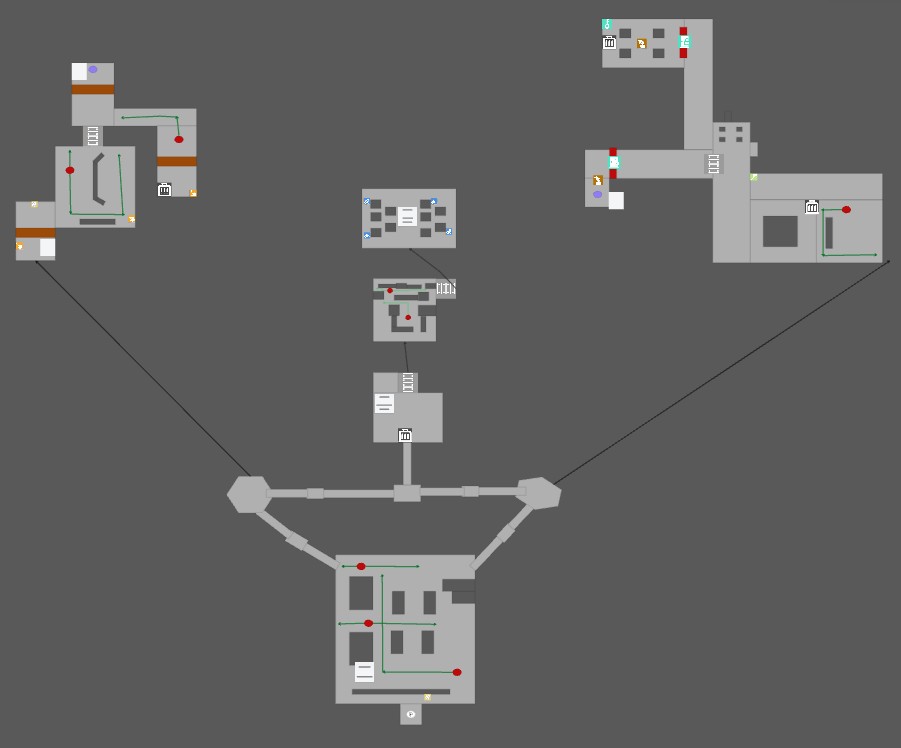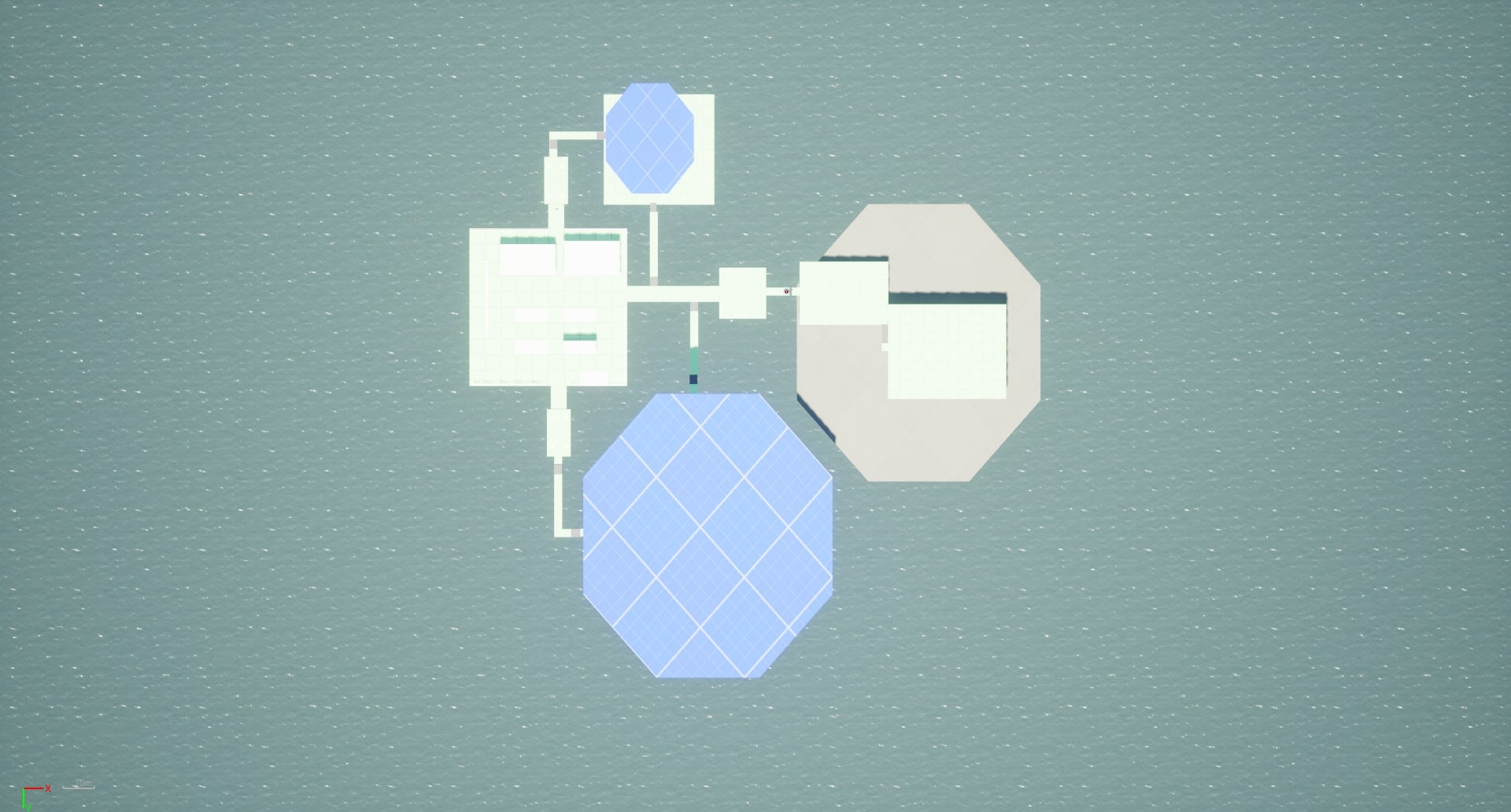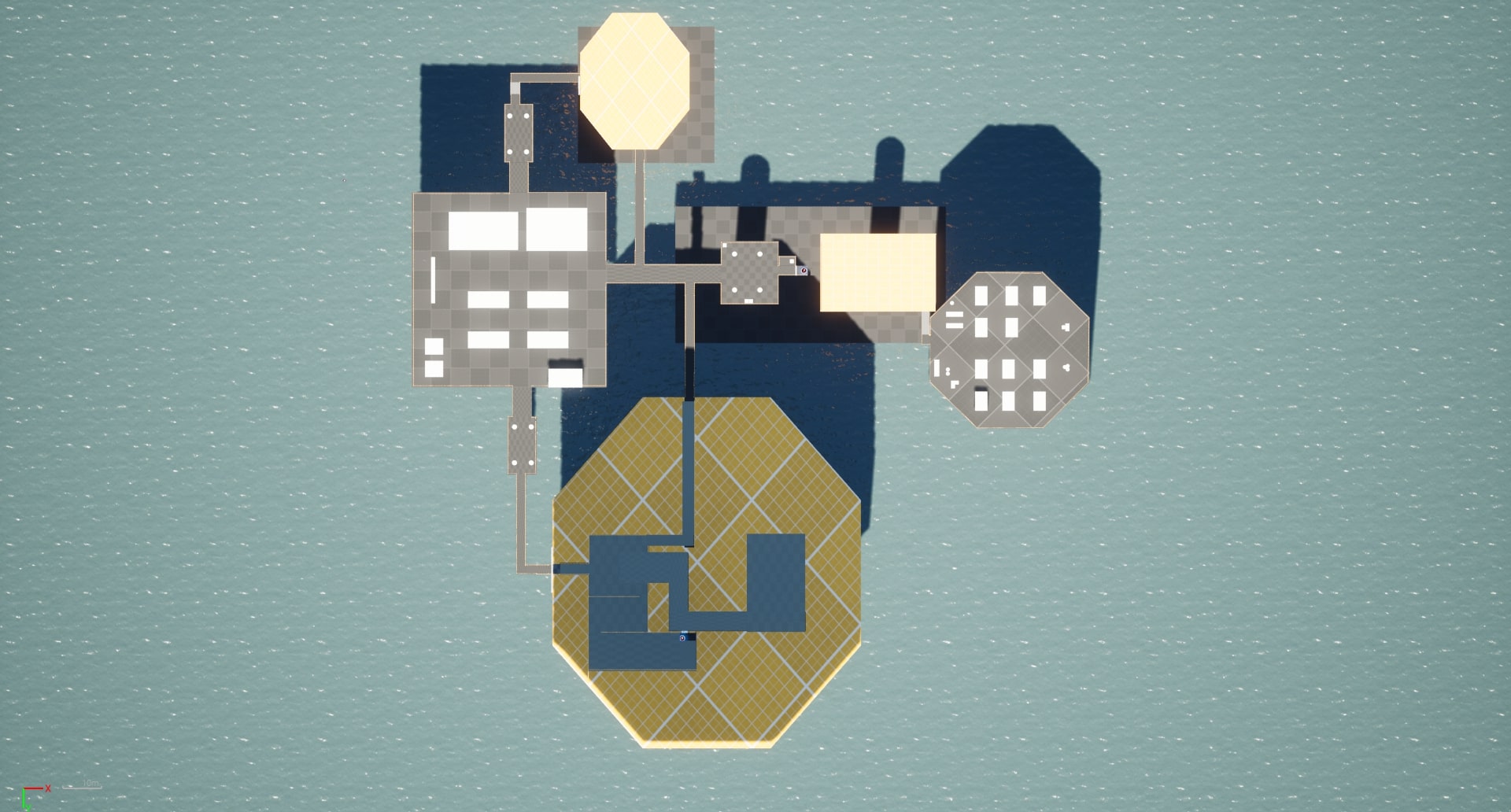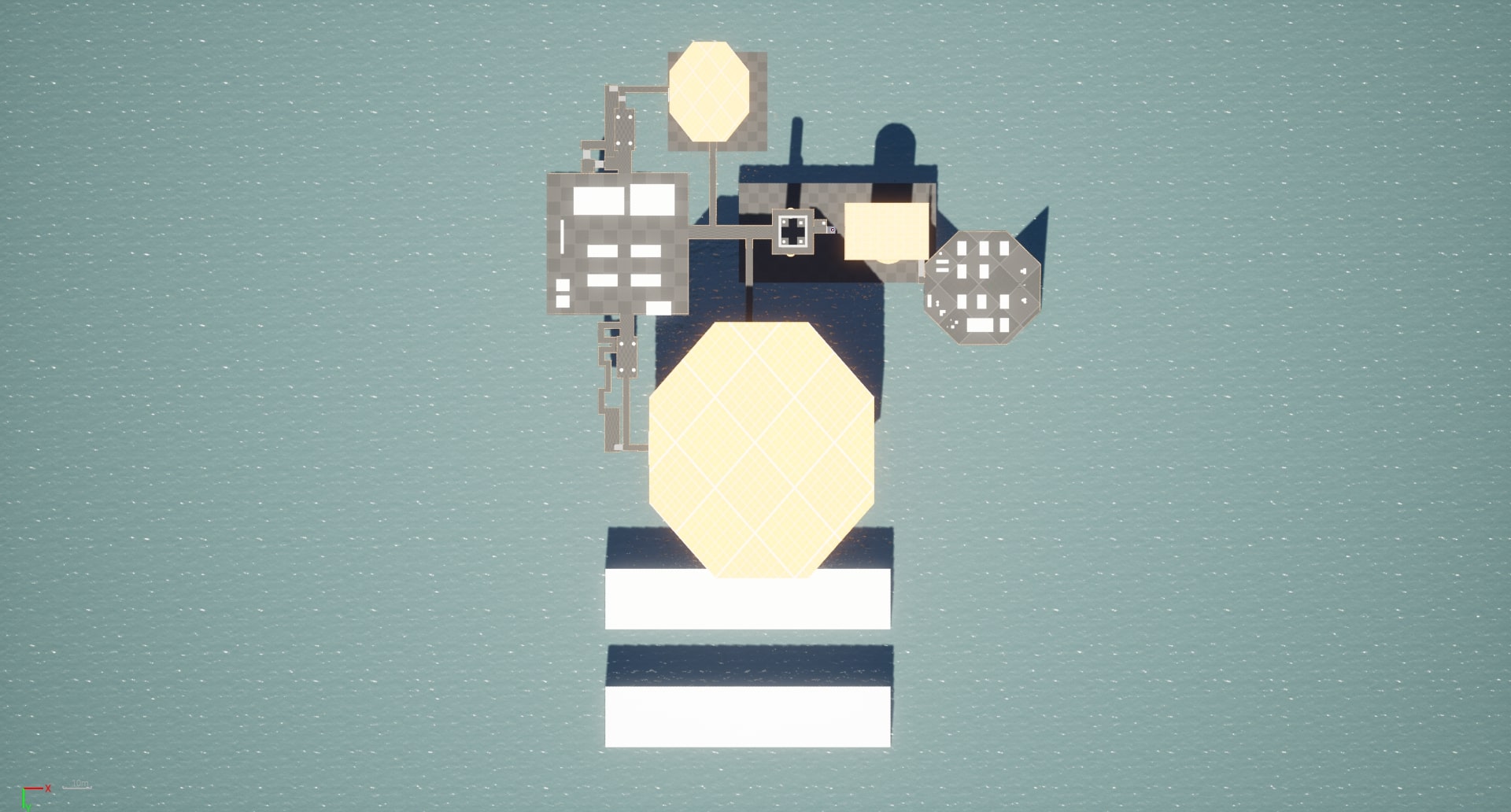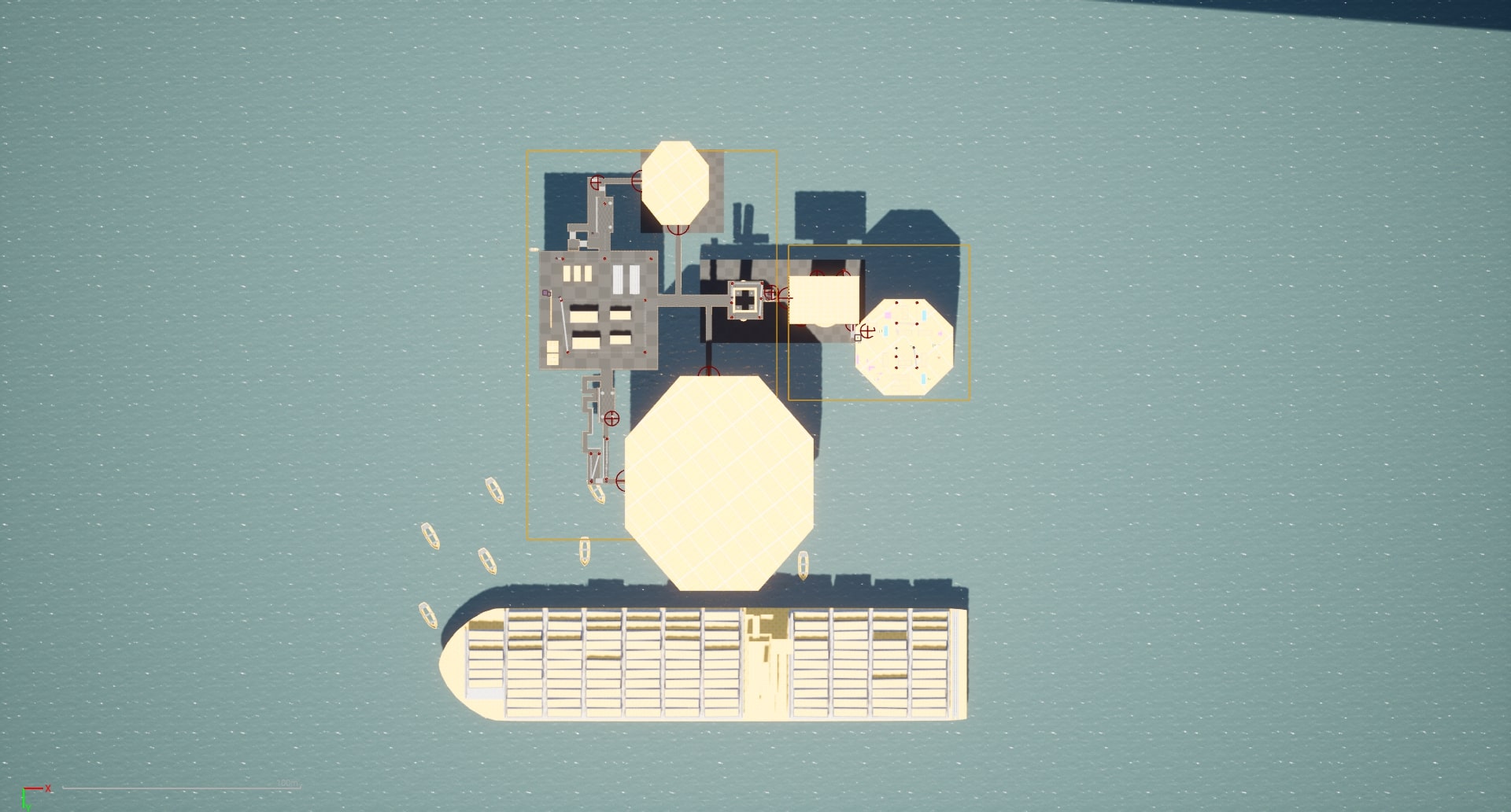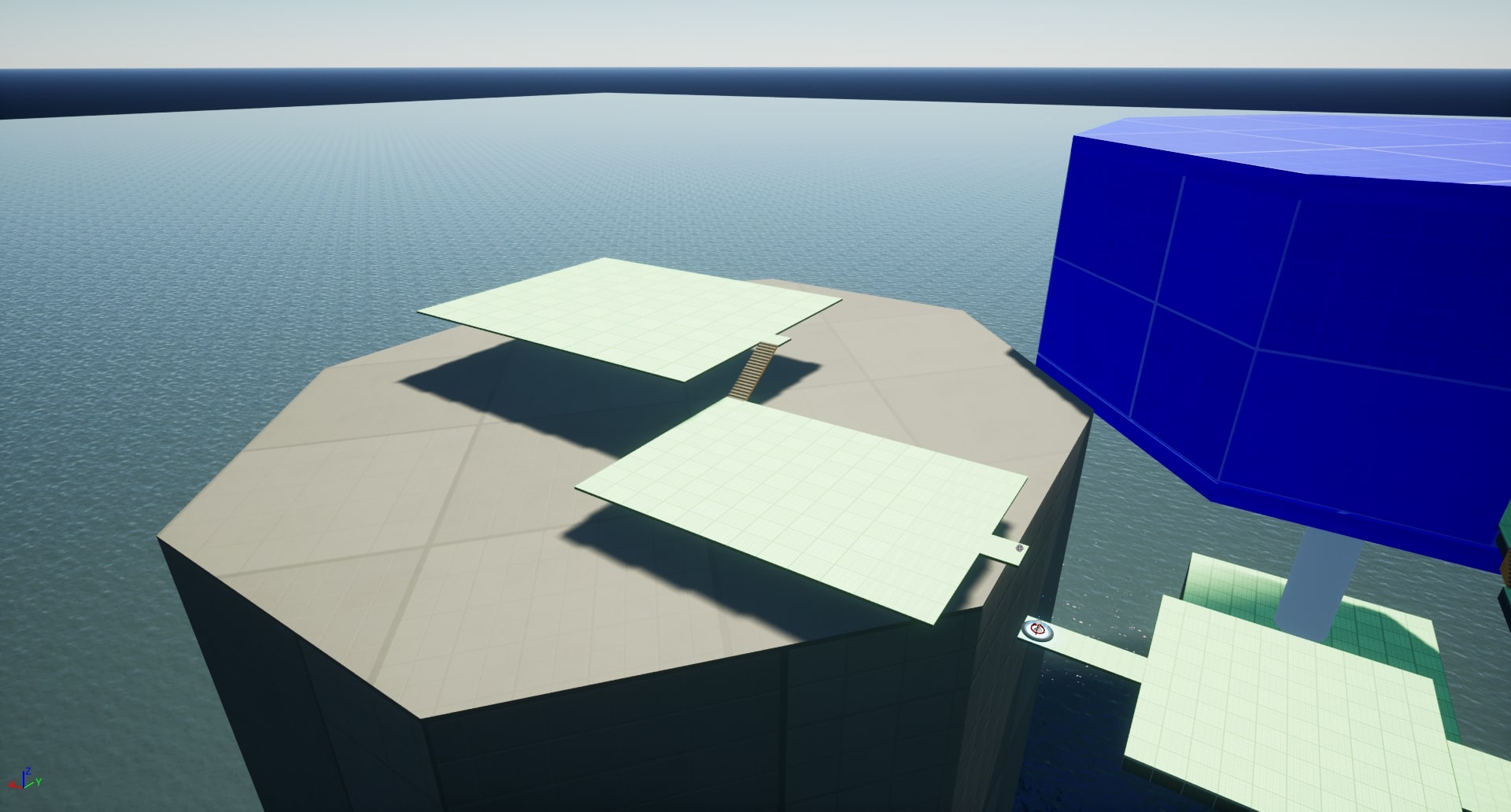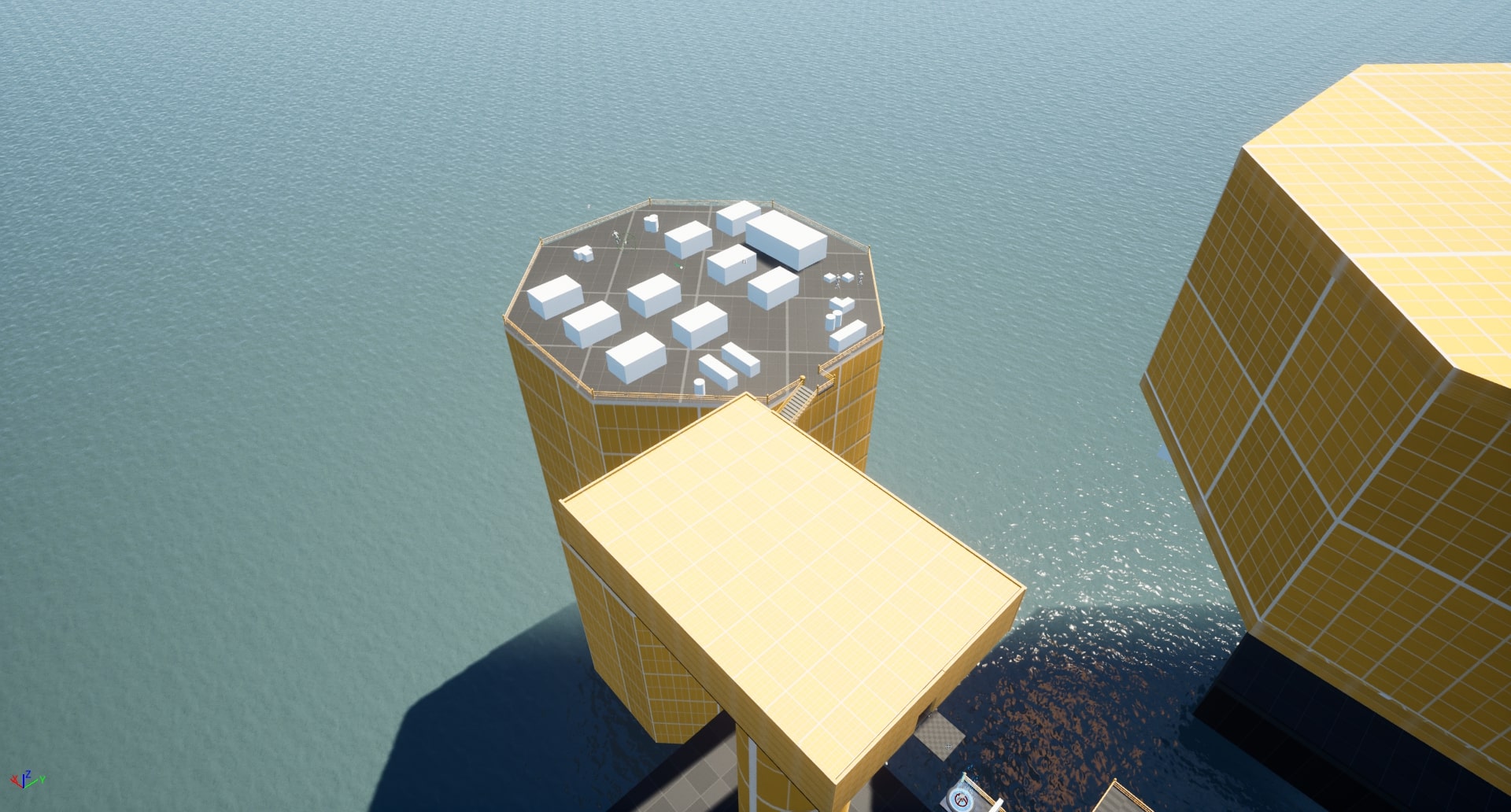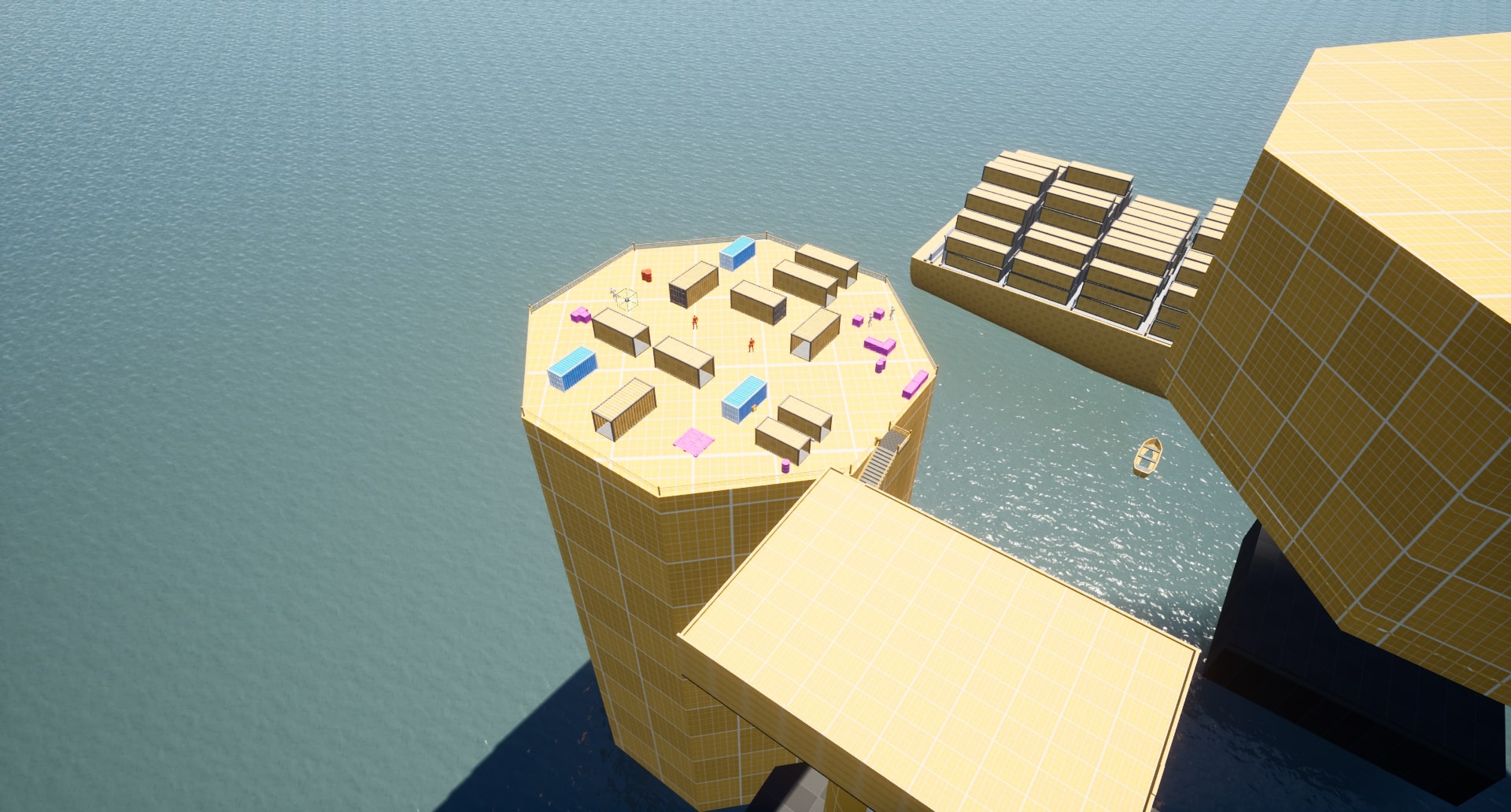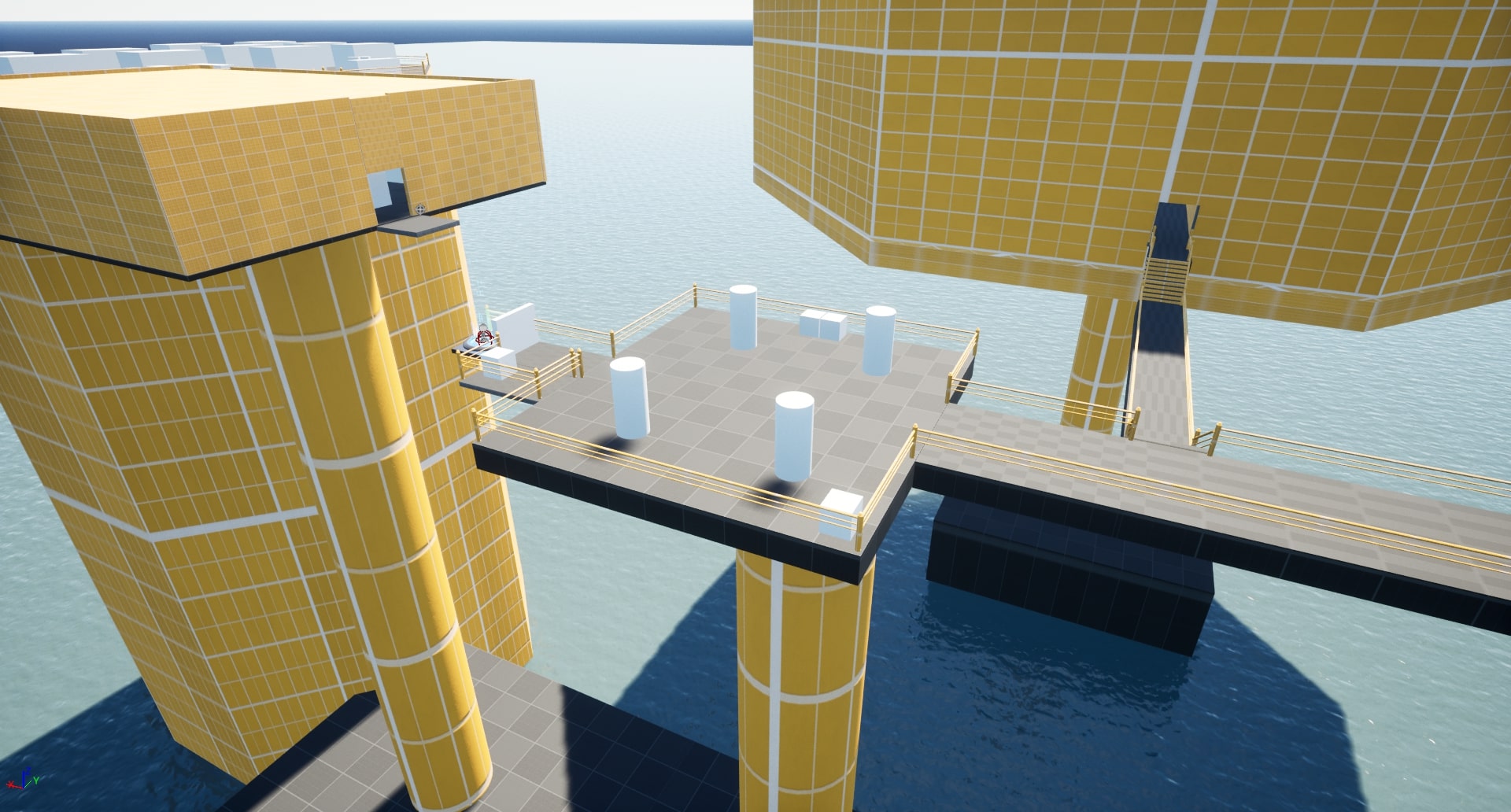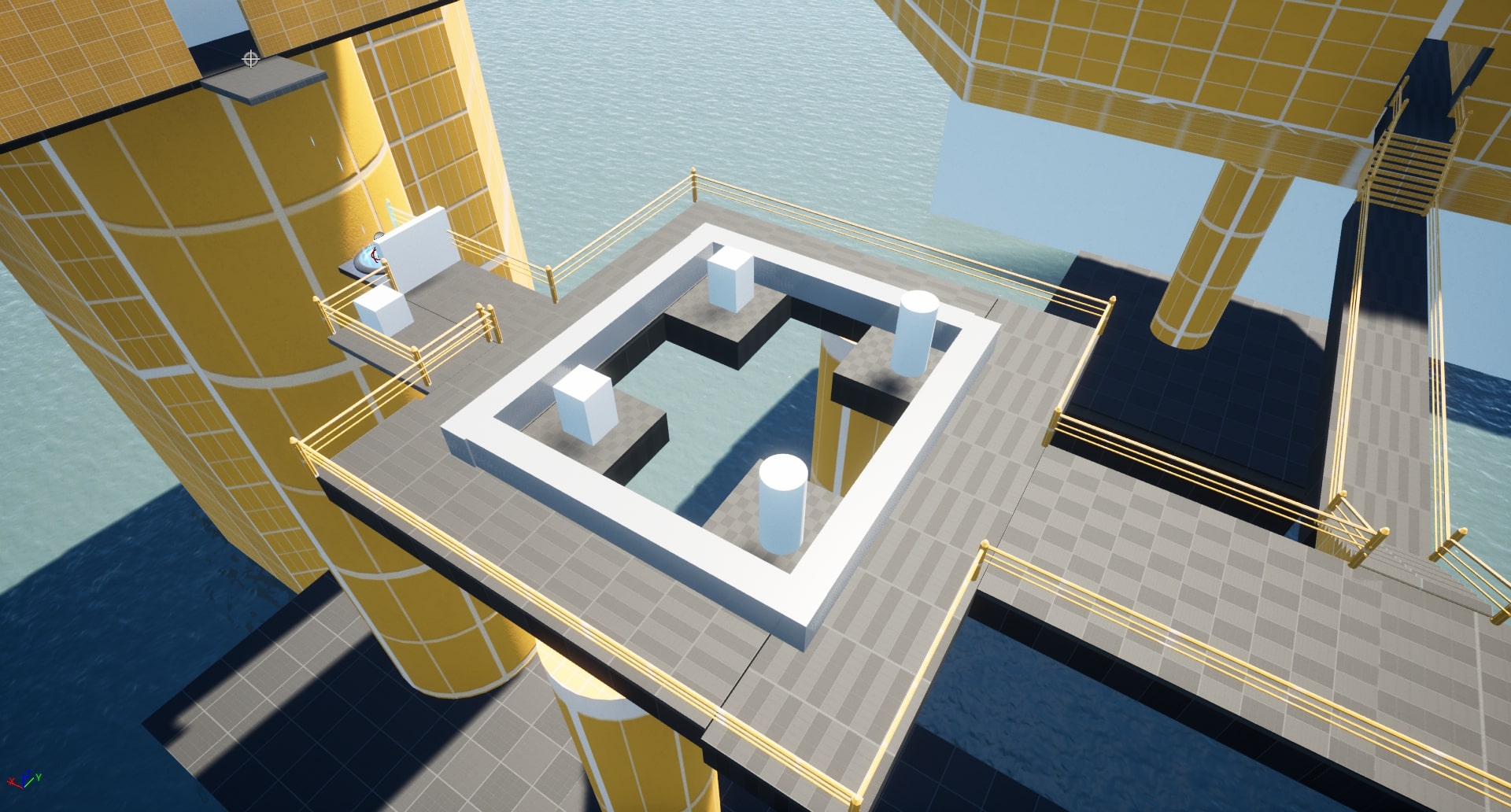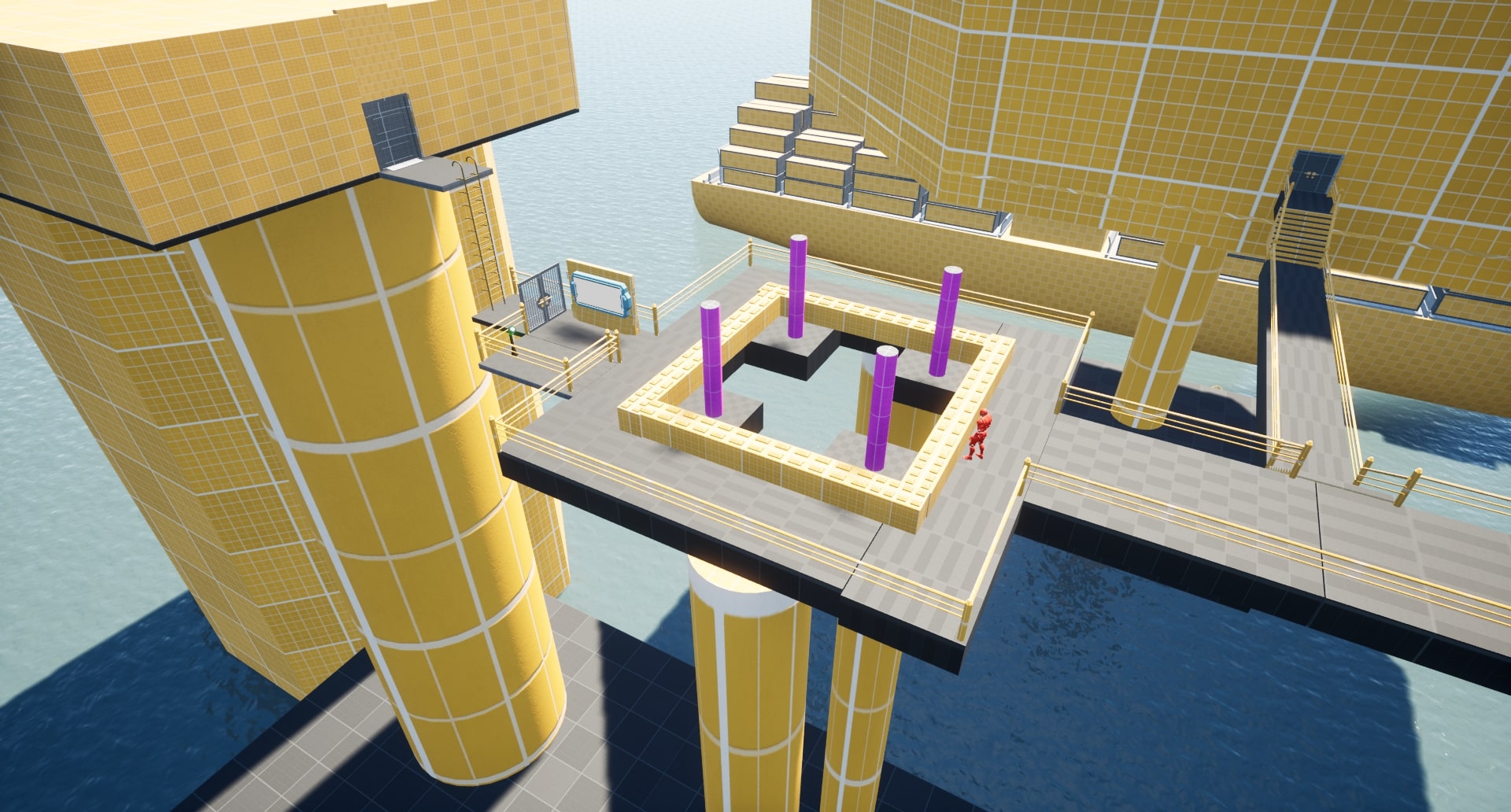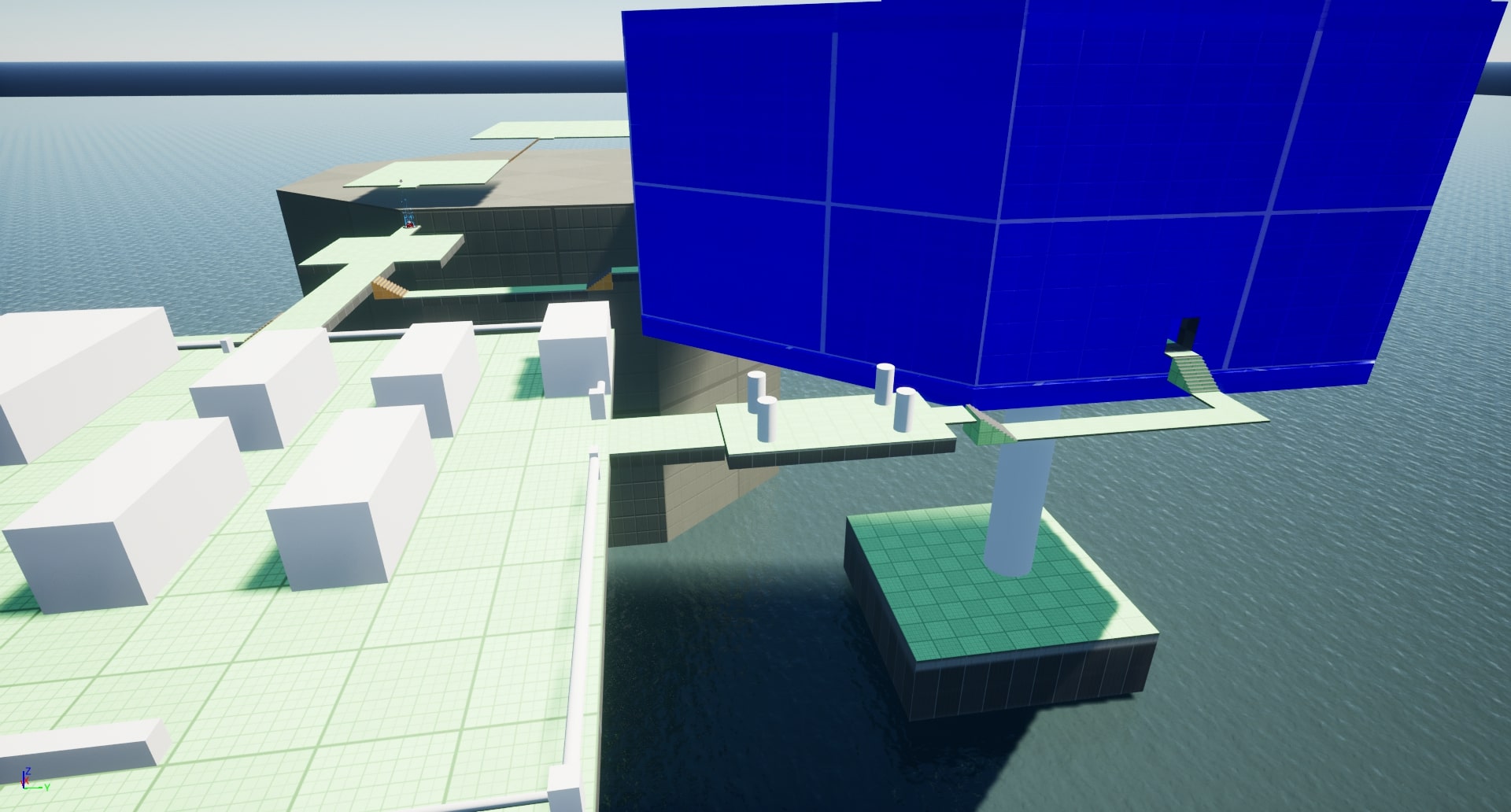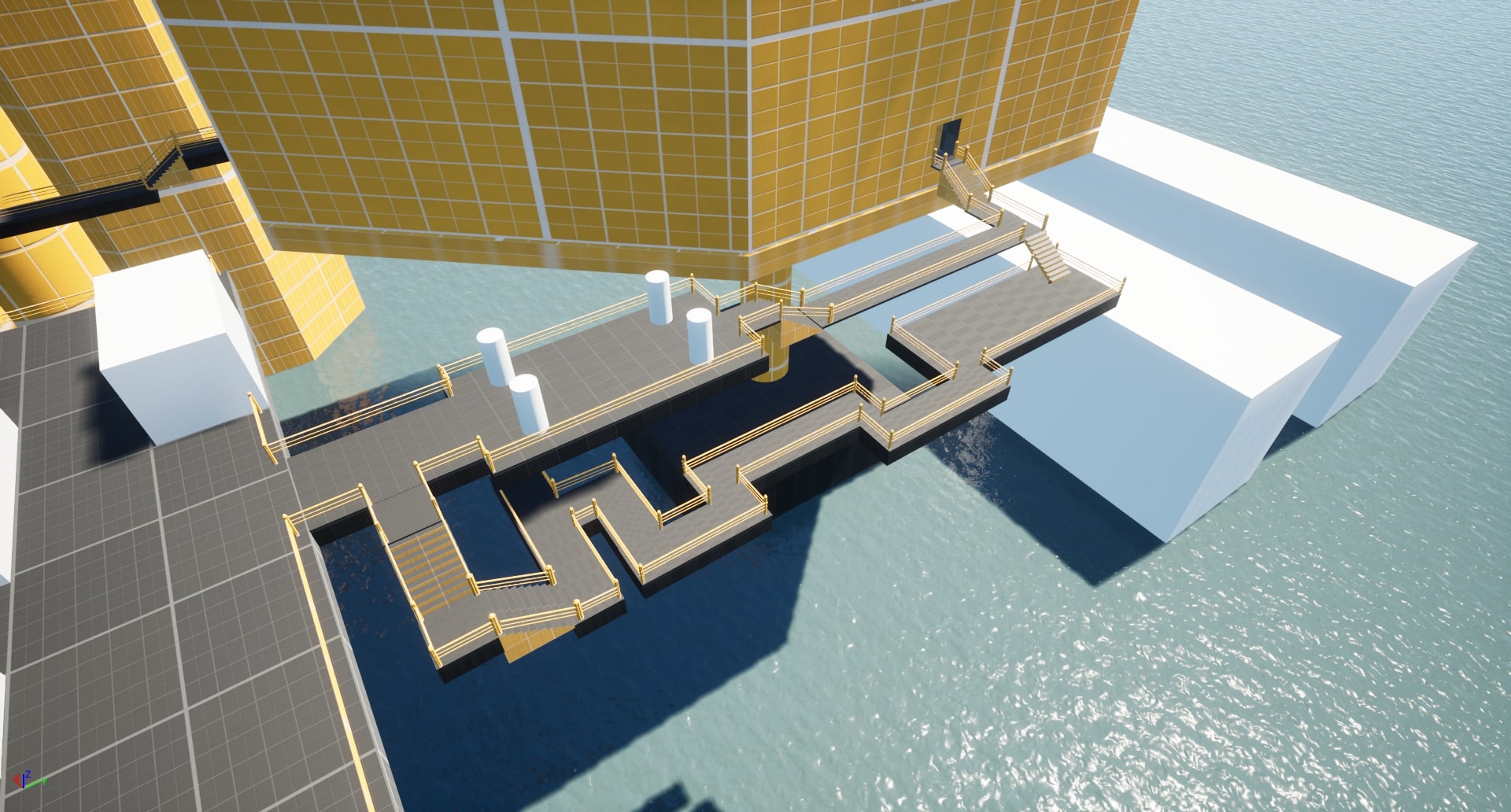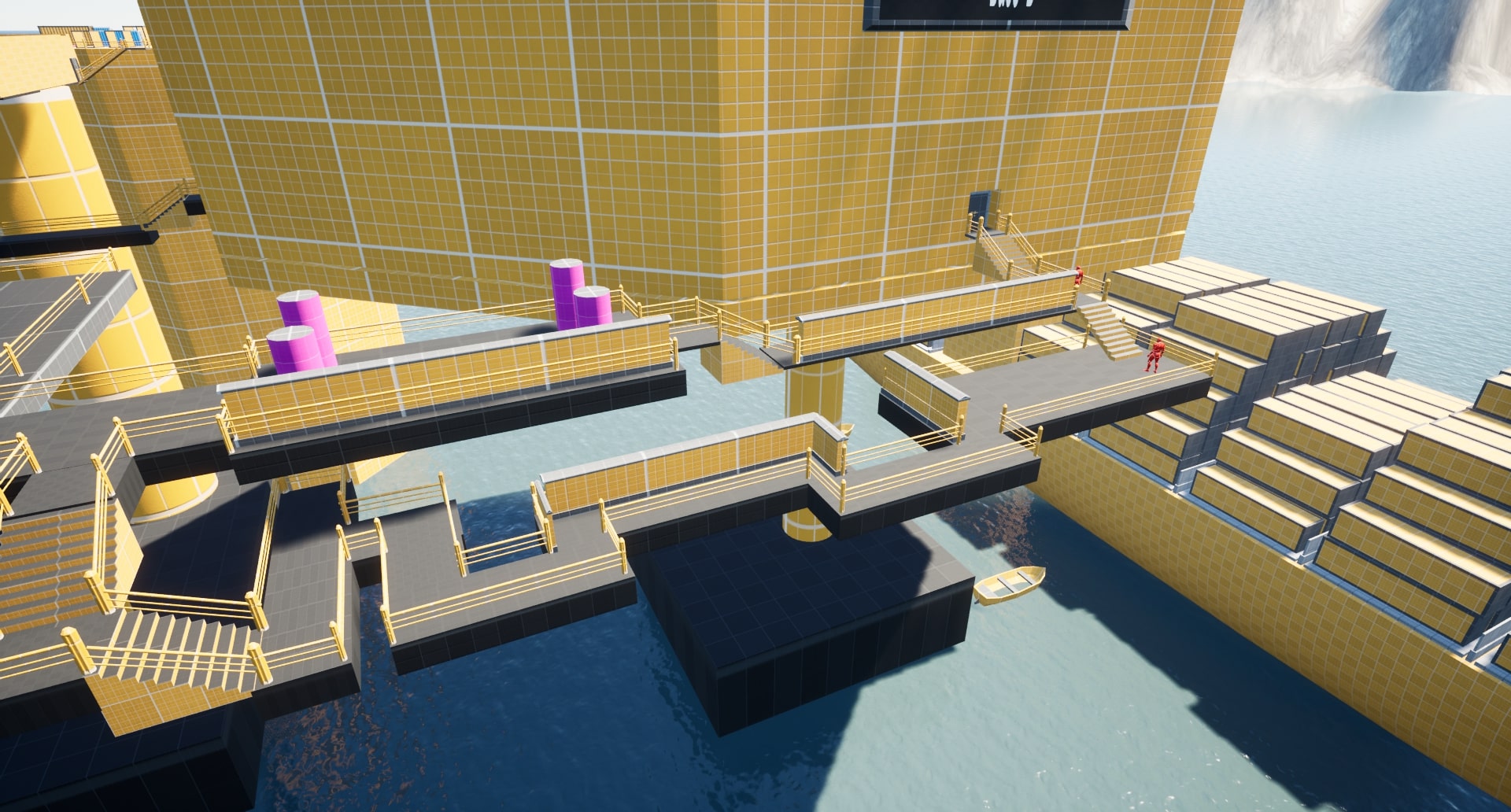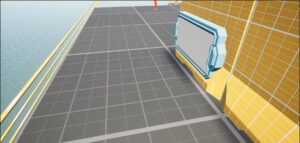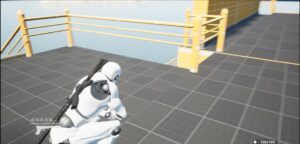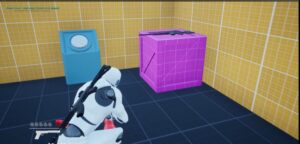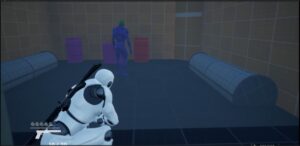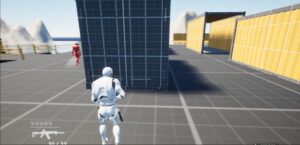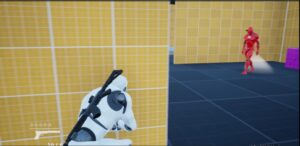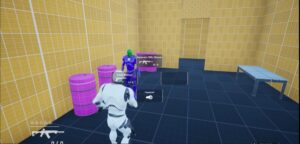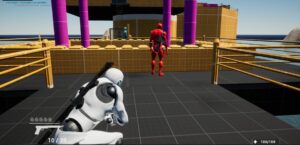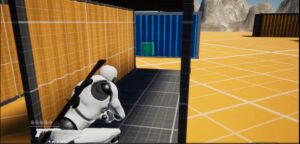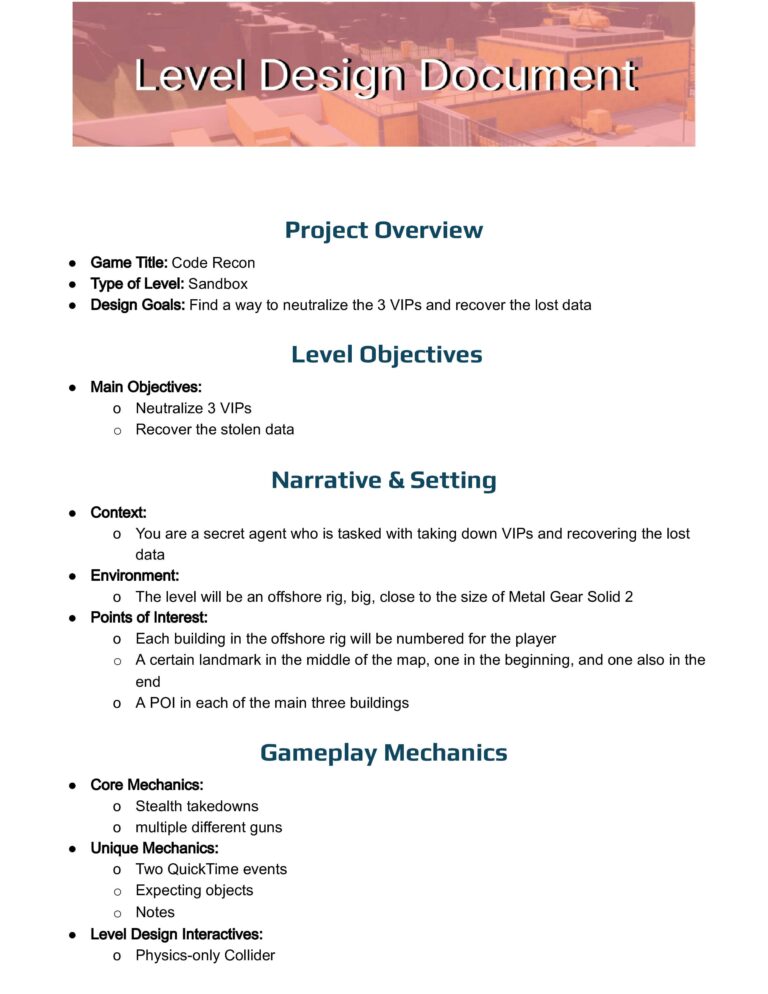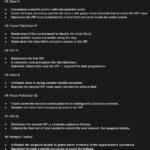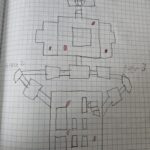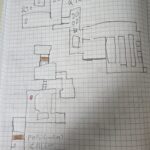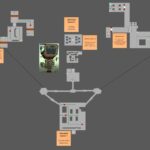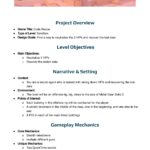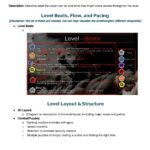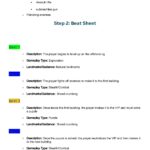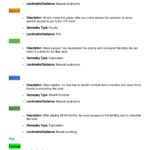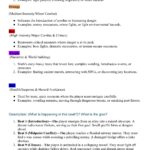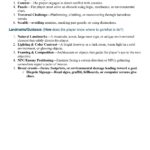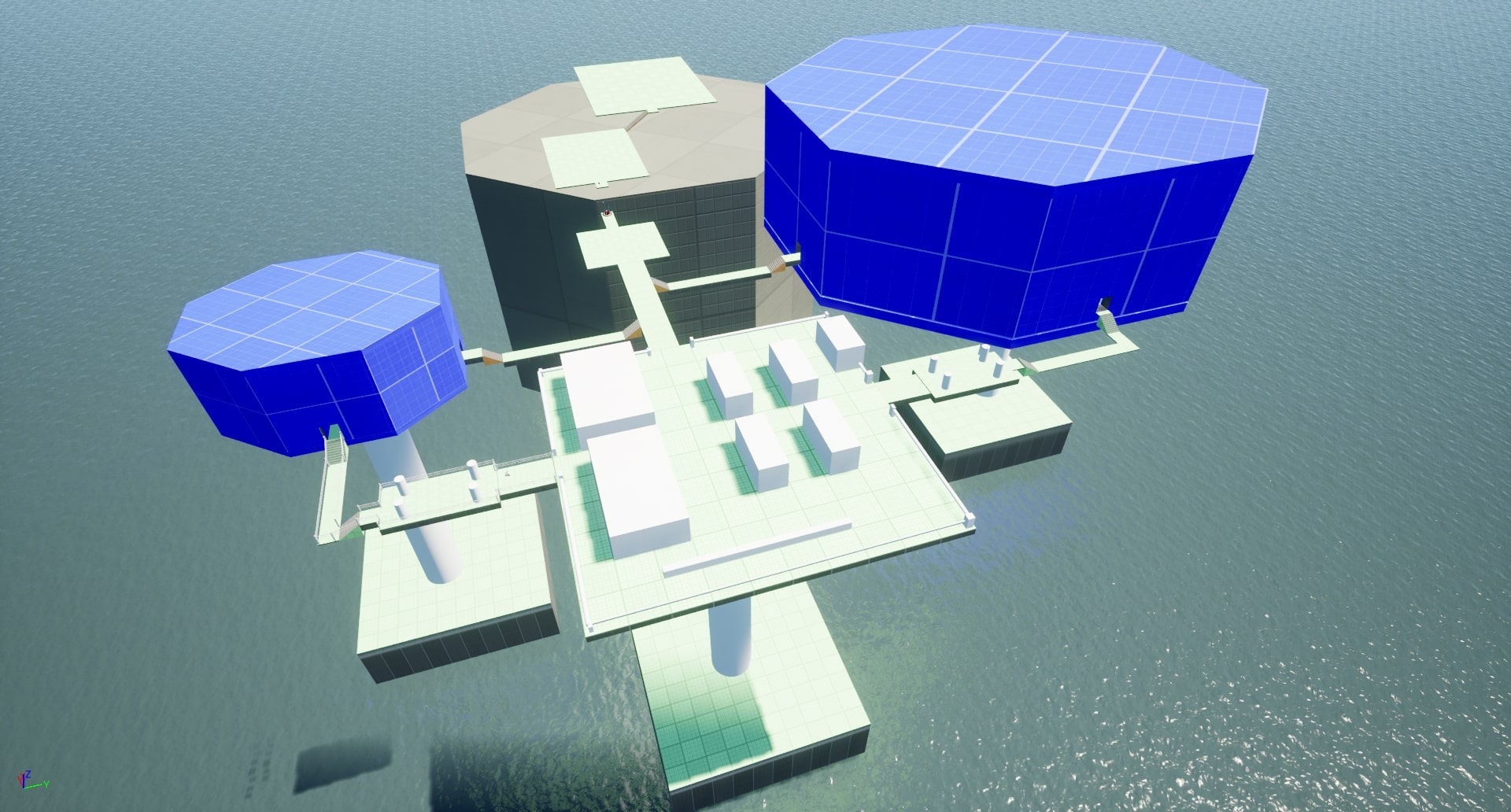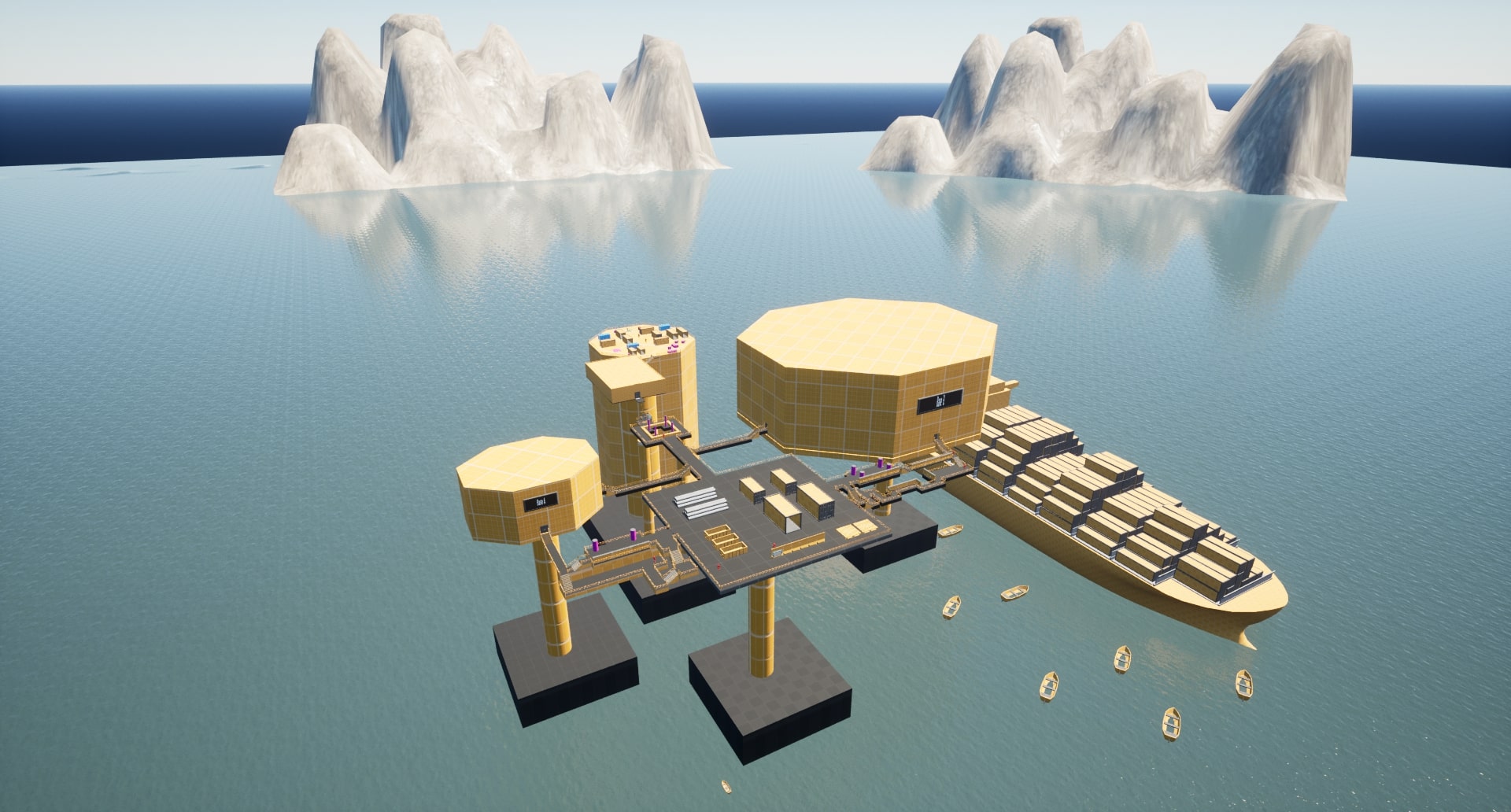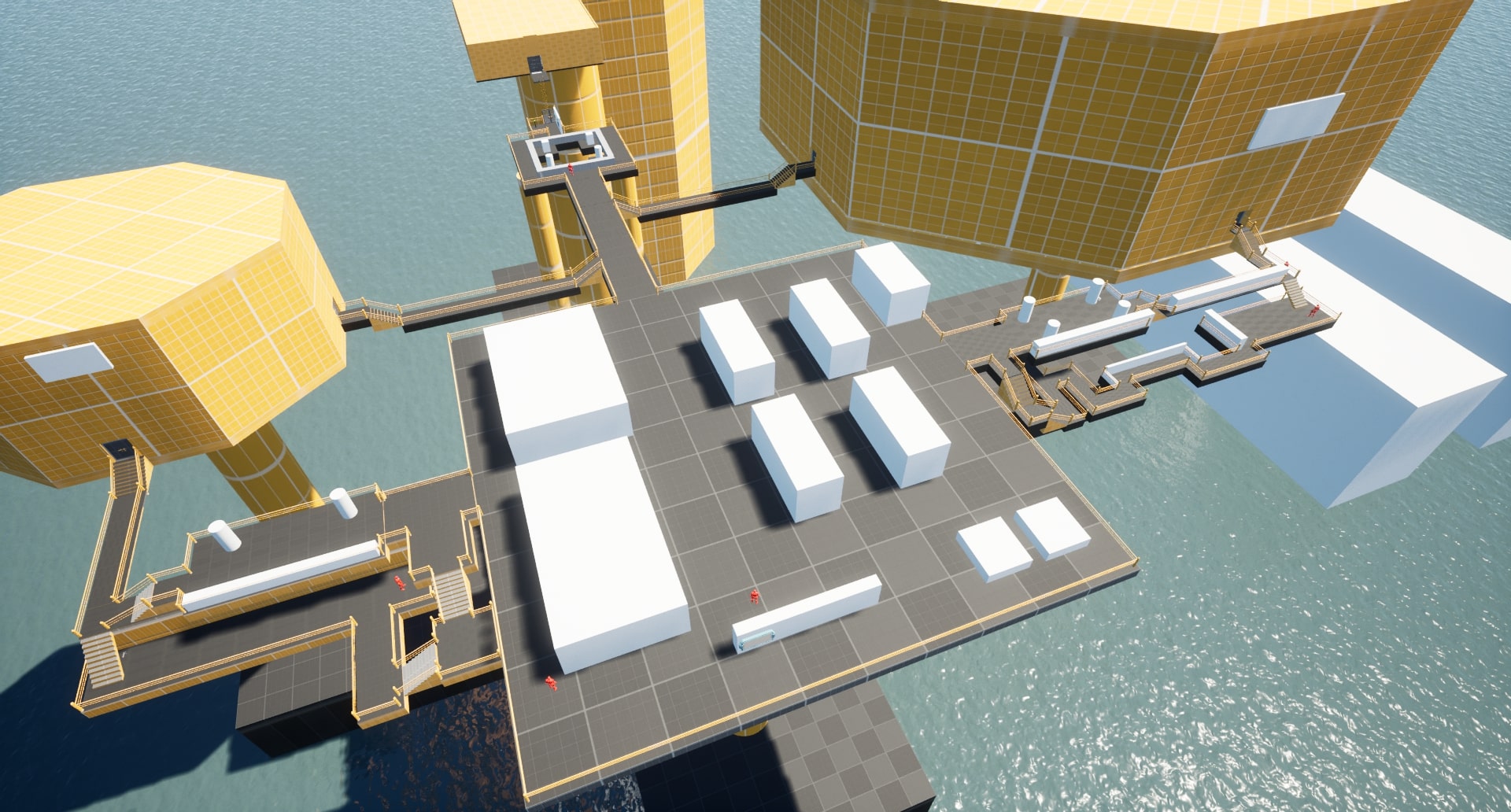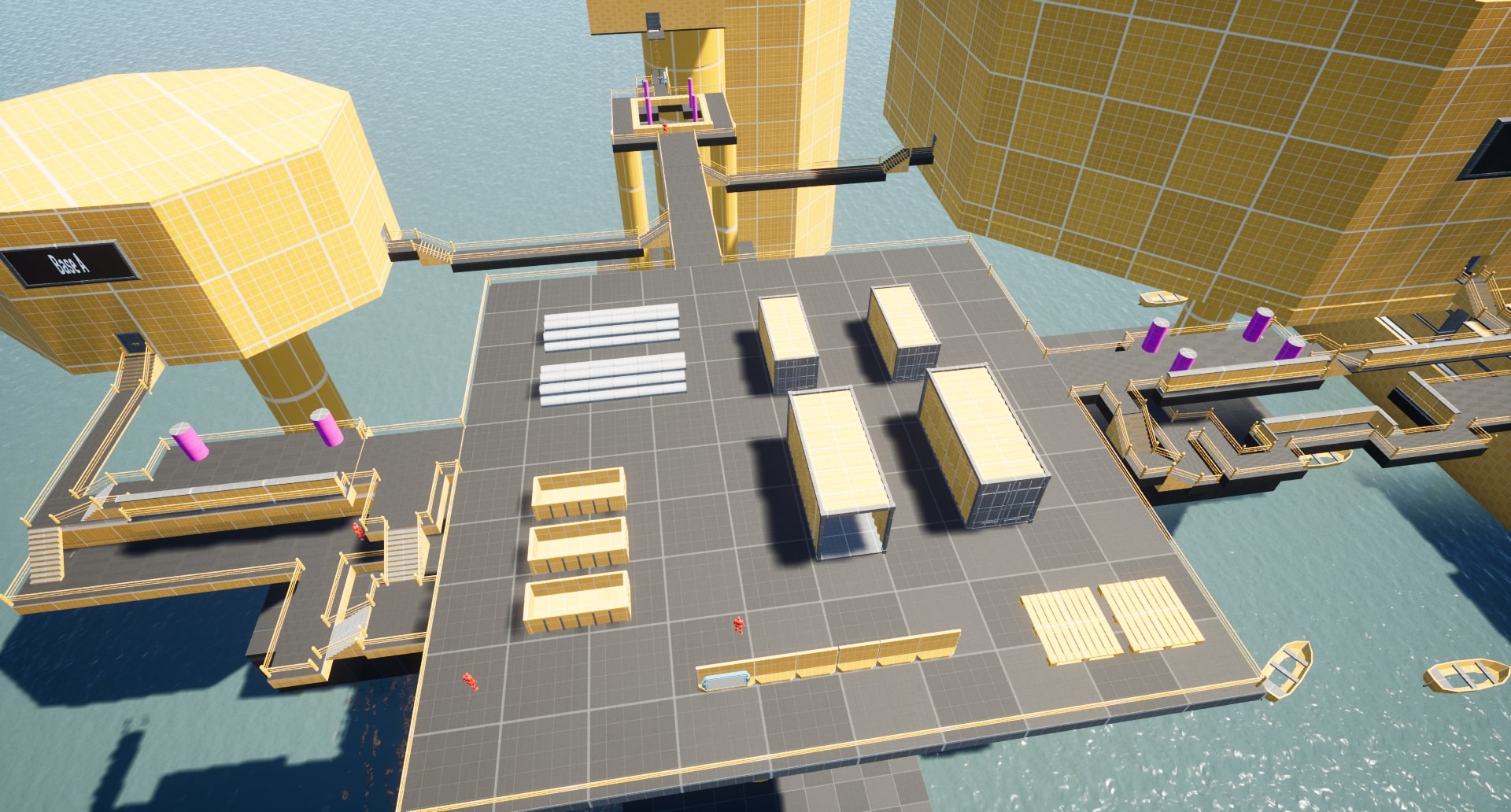Skip To...
Code Recon
- Genre: Third-person action-adventure
- Type: Blockout
- Engine: Unreal Engine 5
- Tools: UE Blueprints, Blockout Starter Pack, Puzzle Logic System, Third Person Shooter Kit v2.1, Miro, Jira
- Iterations # 6
- Role: Level designer
Goal
Code Recon is a third-person action-adventure game that draws strong inspiration from Metal Gear Solid 2. My goal for this project was to create a game that challenges players through stealth-based combat.
This project presented a personal challenge, as I don’t usually develop action-adventure games. The biggest difficulty was ensuring that each stealth encounter felt engaging and rewarding. Through this project, I improved many of my skills, including designing combat interactions, creating combat spaces, and crafting the complex narrative of a spy story.
Level Overview
Highlights of the level
Techniques
Visual Language – Color
Various objects are color-coded to make them easily distinguishable — such as specific cover elements, explosive objects, and unique encounter areas.
- Unique Player Encounters—Certain world objects can be interacted with, creating memorable and varied gameplay moments.
- Clarification (Color Use)—Diverse color palettes were added to reduce visual clutter, making key objects stand out and improving player readability.
Landmarks
Landmarks play a crucial role in my level, as each major story point features a distinct building structure. This helps the player easily recognize where they are during the level.
- Signs—Two distinct areas contain VIP encounters, each clearly marked with signs to help players identify them easily.
- Building Structure—Every major story point features a unique building design, from the two main bases to the helipad and the weapons manufacturing facility.
Walkthrough
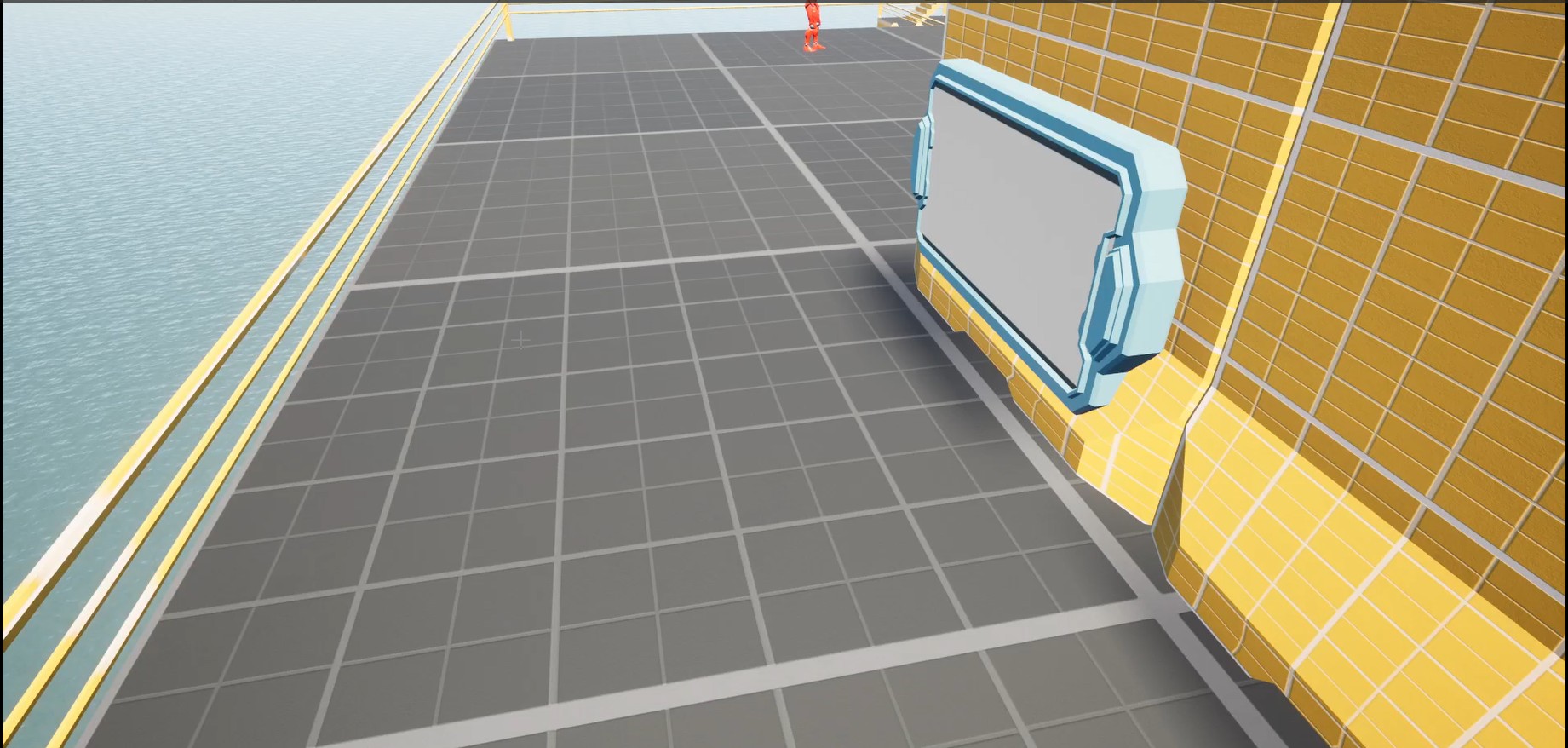
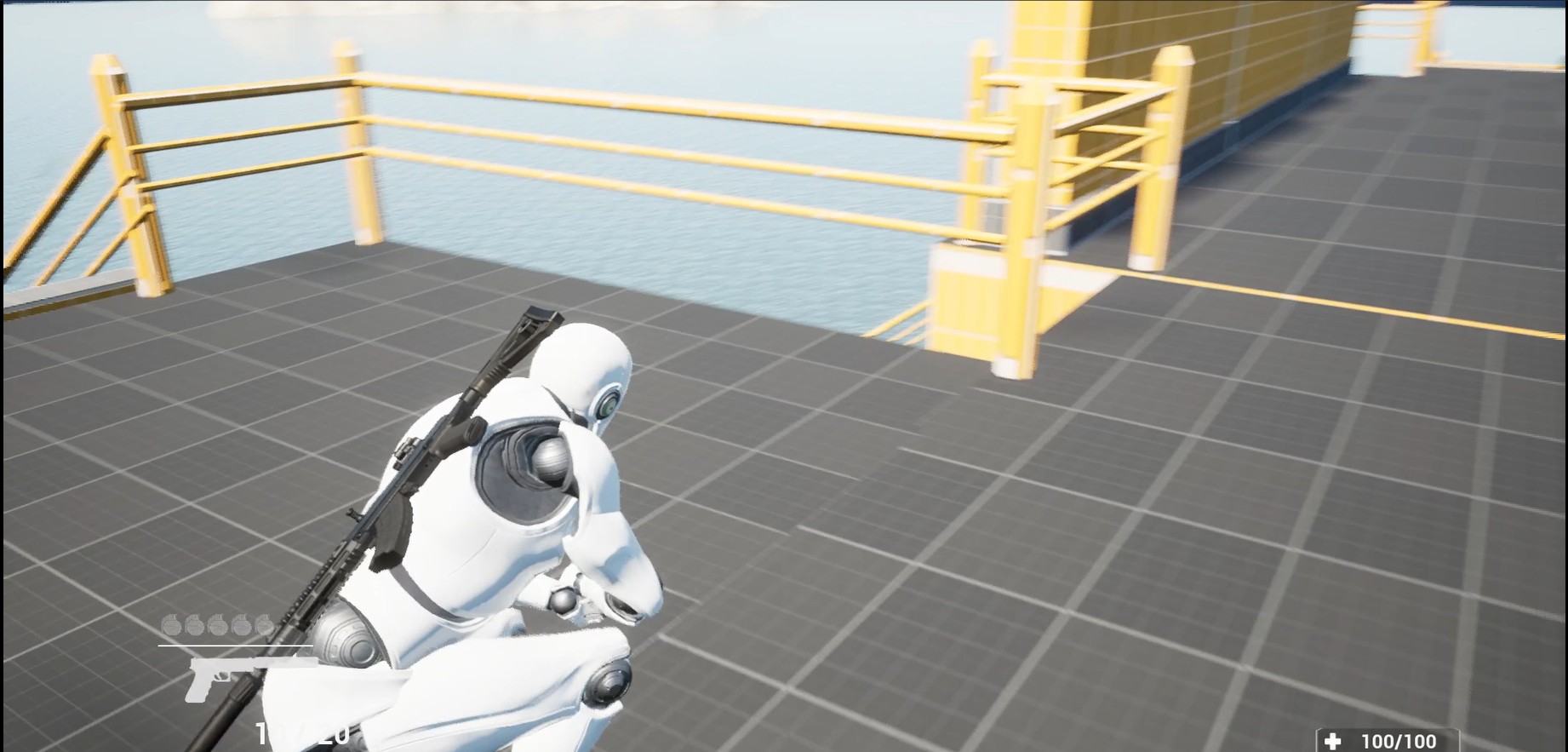
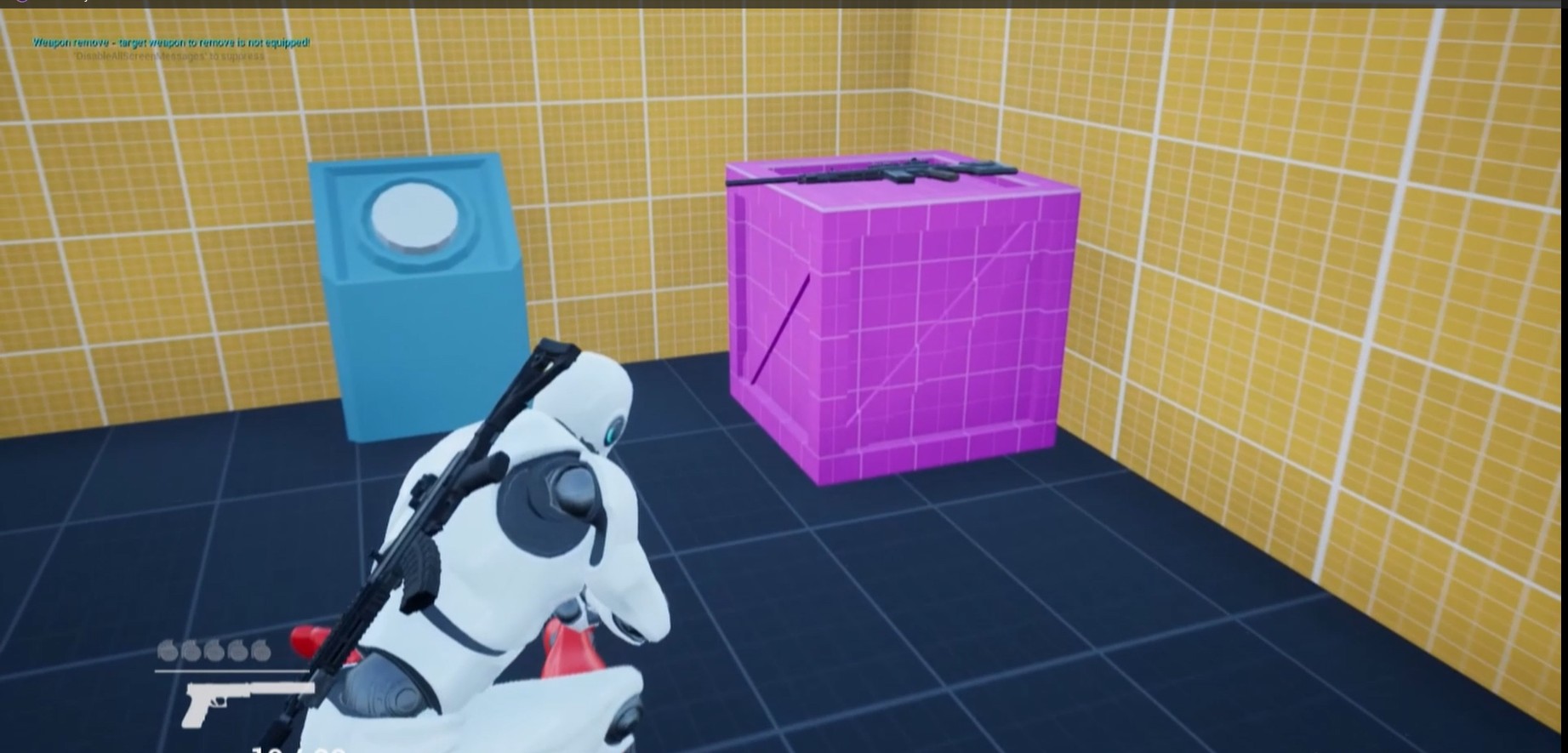
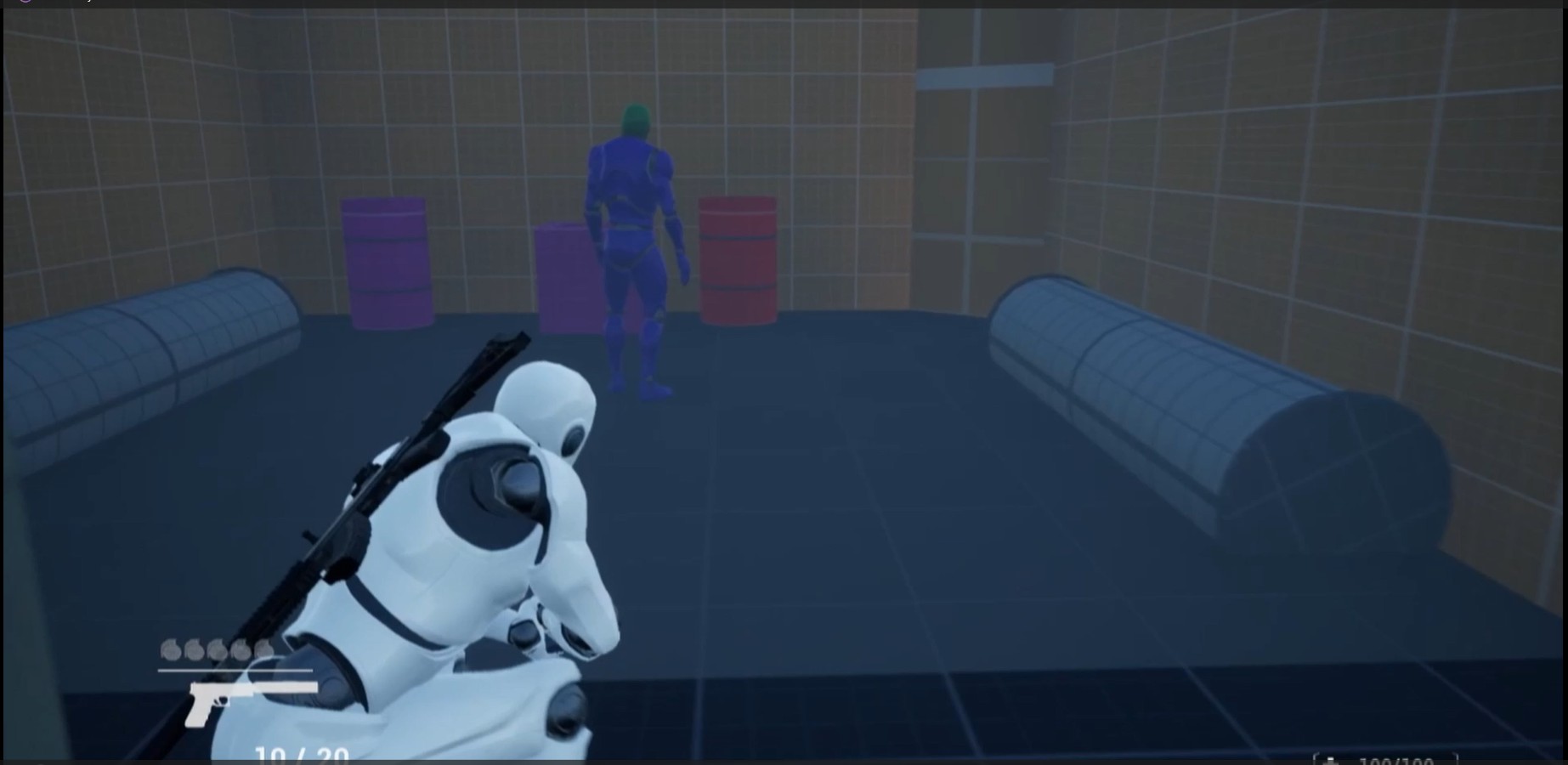
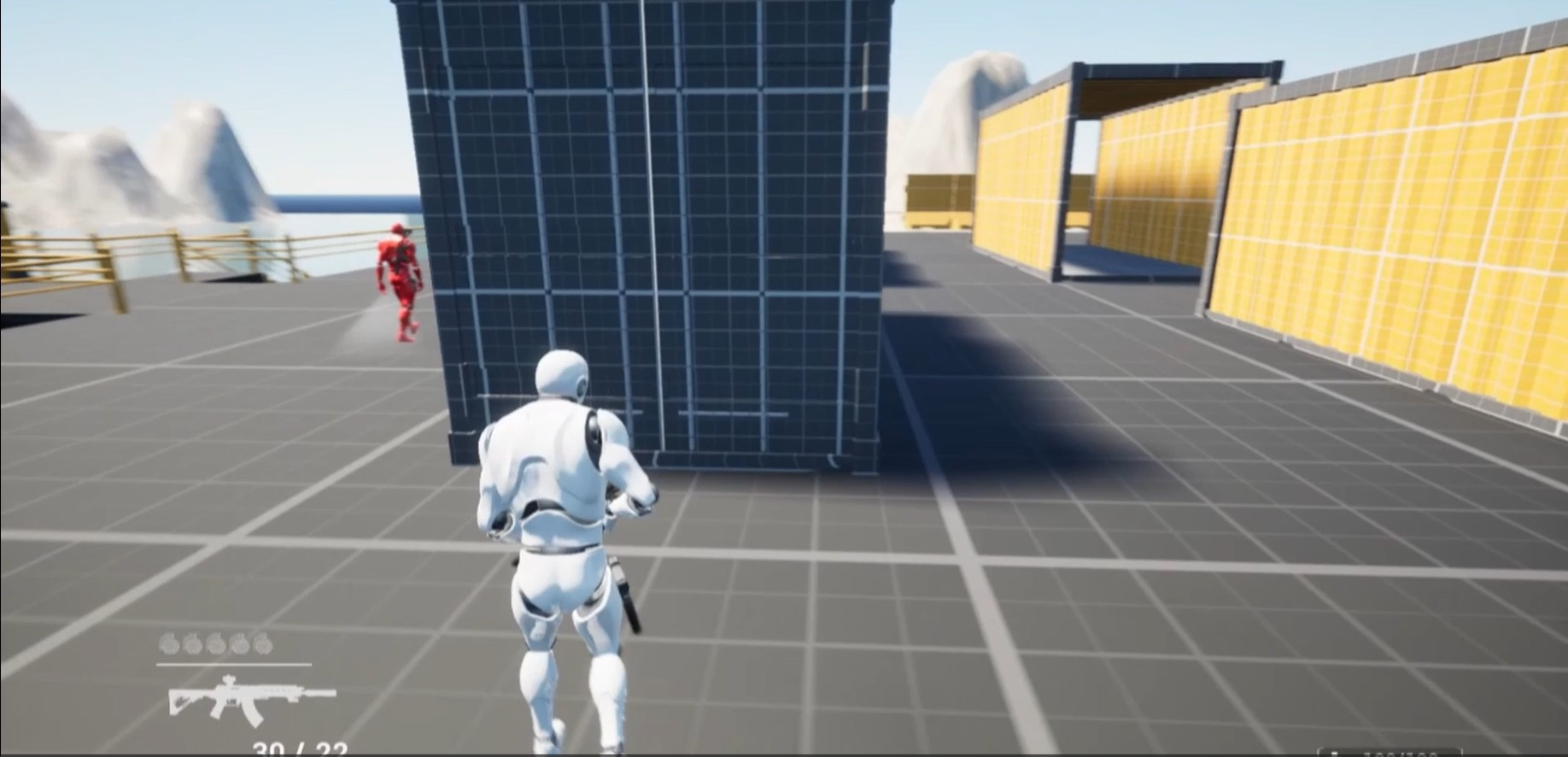
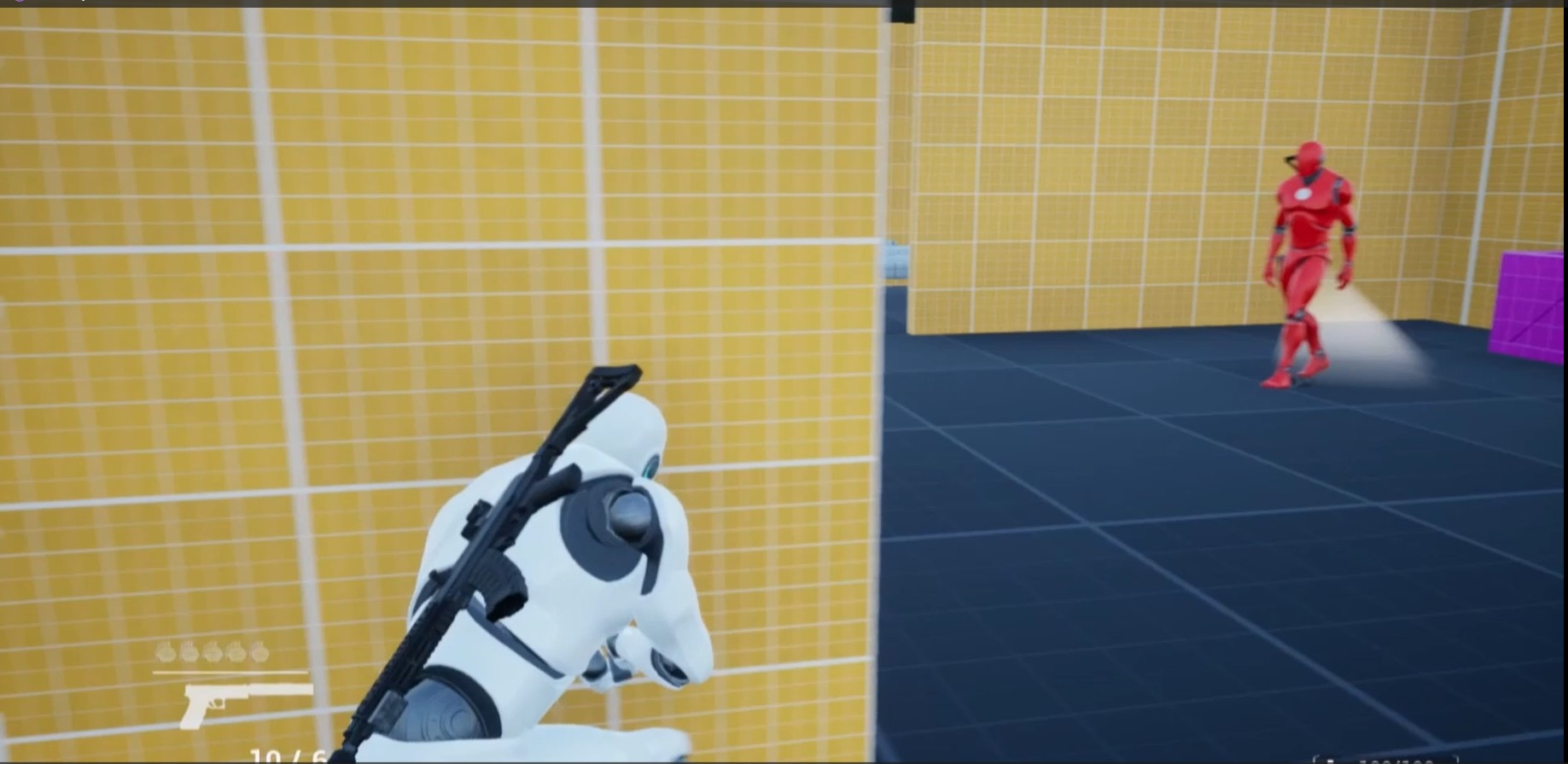
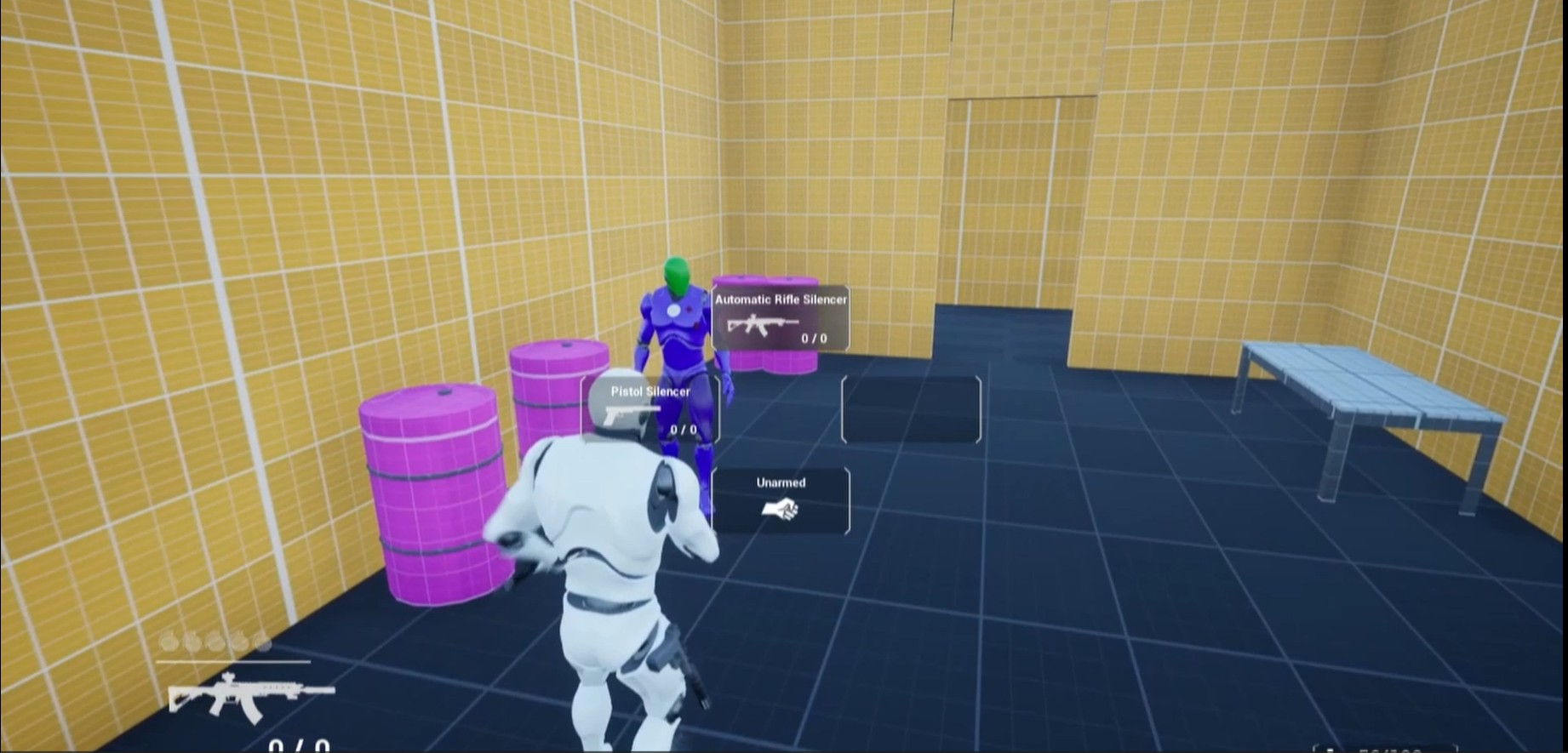
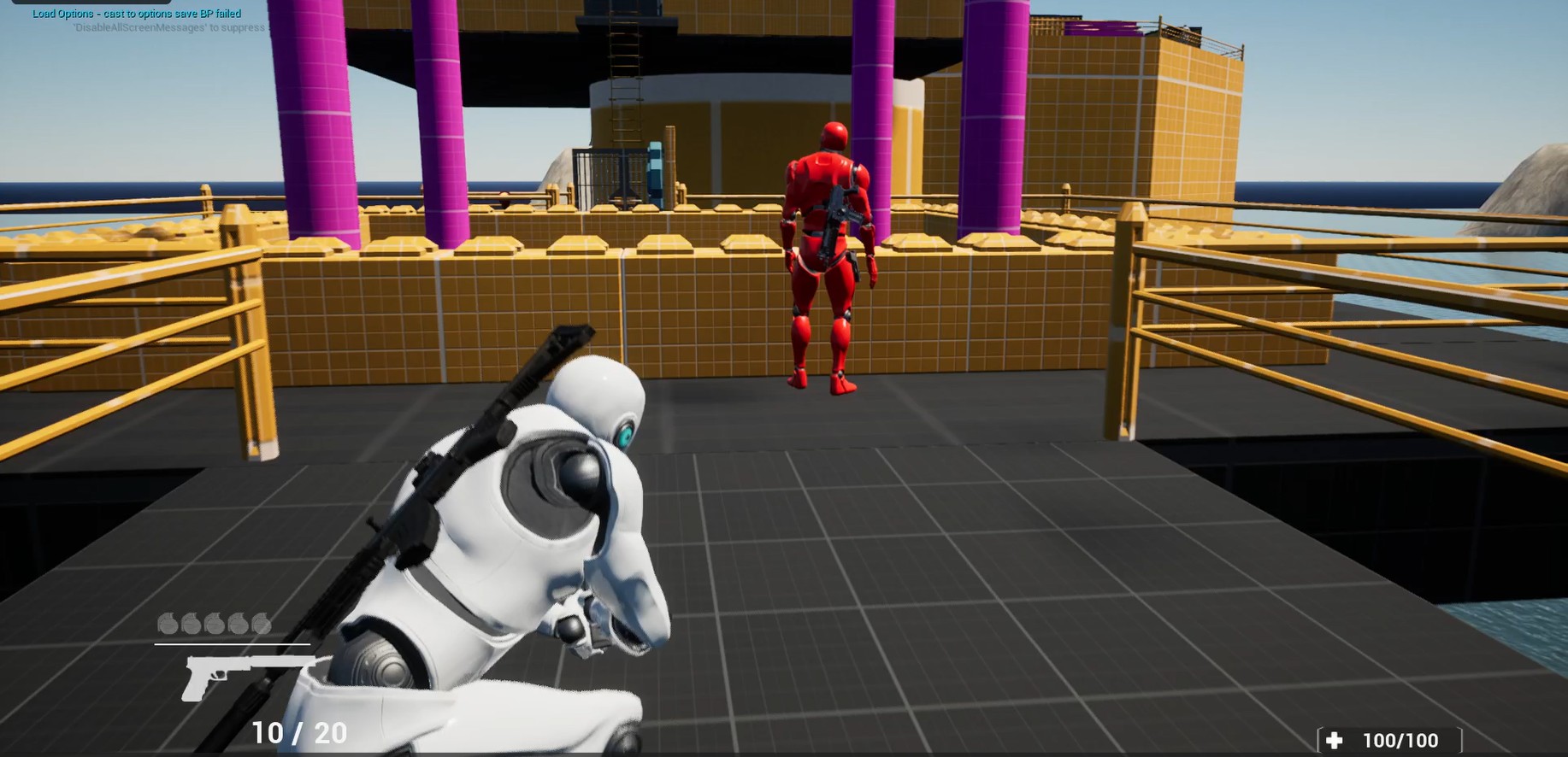
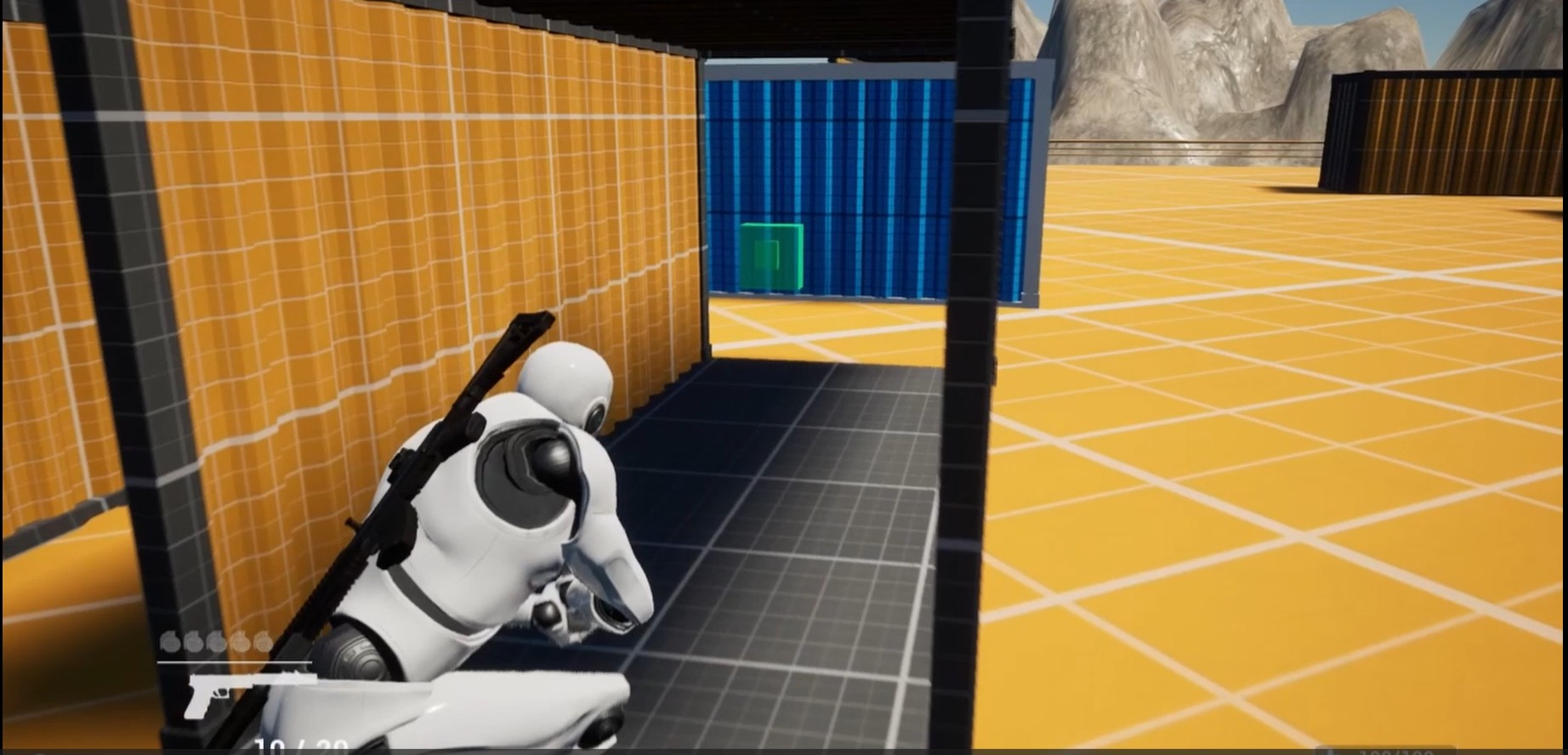
Beat 1: Offshore Rig
Once inside the rig, the player must make their way to one of the VIPs.
Beat 2: Base A
After taking down a few enemies using stealth, the player must make their way to Base A.
Beat 3: Force Field Door #1
The player must locate the control panel to shut down the first force field door to reach the VIP.
Beat 4: VIP #1
The player reaches the first VIP. Once the VIP is eliminated, a cinematic cutscene plays. The player must then retrieve the data located next to the VIP.
Beat 5: Base B
The player must now make their way to the second base, where the second VIP is located. Another stealth encounter awaits that the player must overcome.
Beat 6: Force Field Door #2
The player encounters another force field door blocking access to the second VIP and must find the control panel to deactivate it.
Beat 7: VIP #2
- After taking down the second VIP, another cinematic cutscene plays, revealing more information. The player must again retrieve the data located next to the VIP.
Beat 8: Weapon Factory
With both data keys collected, the player can now unlock the door leading to the Weapon Factory, where they must take pictures of the evidence.
.
Beat 9: Helipad
For the final cinematic sequence, the player must plant all the bombs to destroy the oil rig. A final cutscene then plays, showing the player escaping as the rig explodes.
Top down view of the beats
Walkthrough Guide
Process
1: Research, ideation and planning
I began the project by exploring creative directions, gameplay themes, and tone through structured ideation and visual research.
- Early Concept: During the early concept phase, I collected all the asset packs I planned to use for the project and documented every available item or unique mechanic I wanted to include. While many of these ideas didn’t make it into the final version, this process helped me establish an early proof of concept and a strong creative foundation.
- Visual References: I researched a wide variety of video games and levels, including oil rig blueprints, to guide my level design process. Metal Gear Solid 2 was a major influence in shaping the kind of level I wanted to create. I also drew inspiration from other forms of media, not just video games.
2. LDD and 2D map
- Gameplay Beat Sheet
Breaking the level into smaller segments significantly improved my development process. Each section included descriptions of landmarks, player interactions, and the mechanics I would use—such as stealth, narrative moments, combat, or boss encounters. I kept the total number of beats under ten to maintain a clear, focused structure for my level.
- 2D Map
I began by sketching a rough 2D layout to quickly visualize ideas and identify which concepts to refine or discard. Afterward, I recreated a cleaner version in Miro. With each iteration, I revisited the 2D map to add, remove, or adjust elements as needed to improve flow and readability.
- Level Design Document
The Level Design Document served as my golden rulebook for the level. It included details such as environmental points of interest, core and unique mechanics, as well as a section for enemy types and the weapons they would use. This document helped me maintain a clear and consistent vision throughout the design process.
3: The First Roughout
Goal: Create a third-person stealth action-adventure inspired by Metal Gear Solid 2
Solution:
- Utilized various toolkits, including a third-person action-adventure template featuring enemy AI, to align gameplay with the level design document.
- Sketched an initial 2D level map on paper, refined it digitally in Miro, and then built a 3D blockout in-engine.
- Iterated across multiple passes, adding layers such as:
- AI behavior
- Environmental design
- Storytelling elements
- World-building details
- Scripted interactions
Result:
I created a fully playable level that gives the player the option of stealth combat or guns blazing. Metal Gear Solid 2 was a great reference point for this level; the core gameplay ideas allow the players to feel like a spy.
4: Iterating on the Roughout
Second Iteration
I decided to revisit my project and refine these key areas.
- Redesigned most levels to improve variety, cover, and enemy placement in both main bases.
- Added sunlight direction to help players better distinguish between bases.
- Reworked the final area and adjusted story beats for smoother narrative flow.
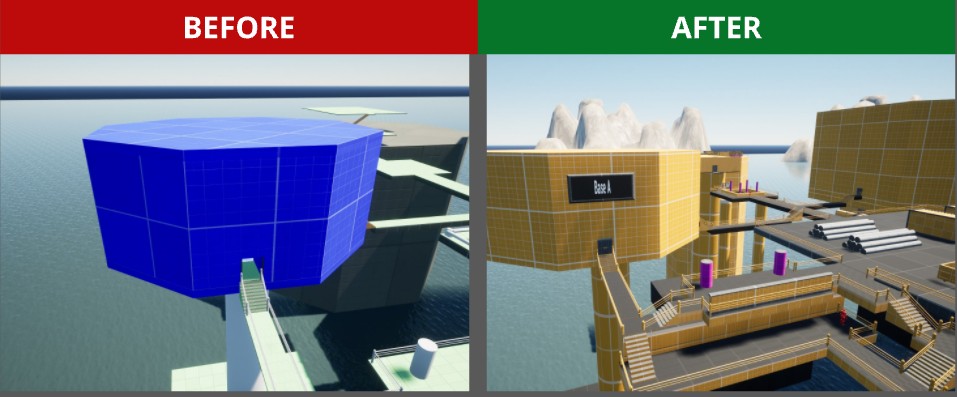
Problem: The player often gets lost, unsure which base or main area they’ve just visited.
Solution: Improved sign placement to give the player clearer directions.
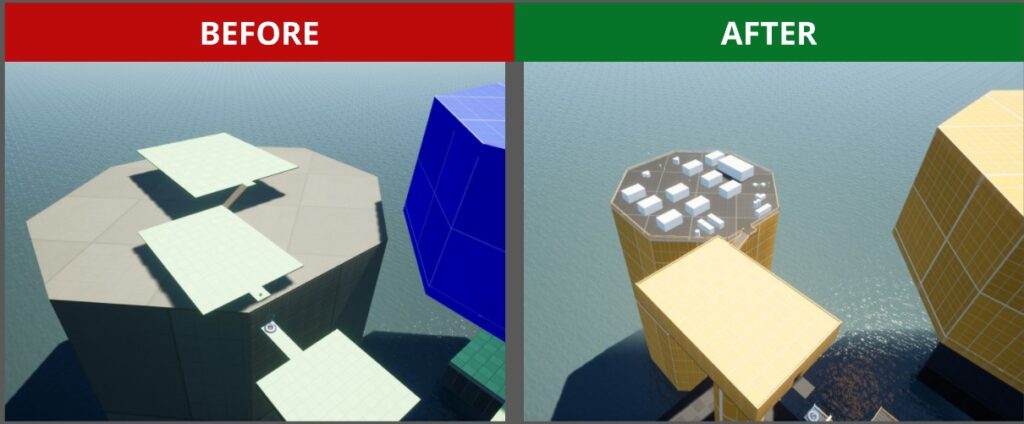
Problem: The last area didn’t flow as intended.
Solution: Added two new sections to the final area to improve story pacing and flow.
Third iteration
I decided to revisit my project and refine these key areas.
- Added a sidewalk to each route leading to the main bases.
- Reworked a section of the final area to fine-tune gameplay difficulty.
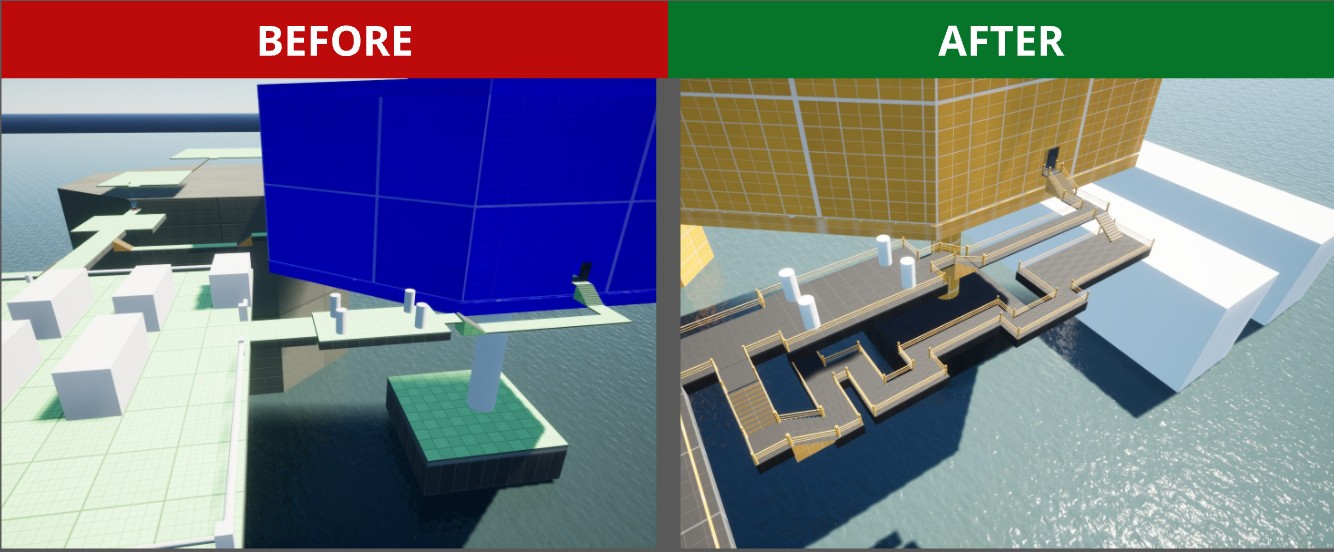
Problem: The combat leading to both main bases didn’t feel challenging.
Solution: Added a sidewalk to each path leading to the main bases, increasing both challenge and variety in the objectives.
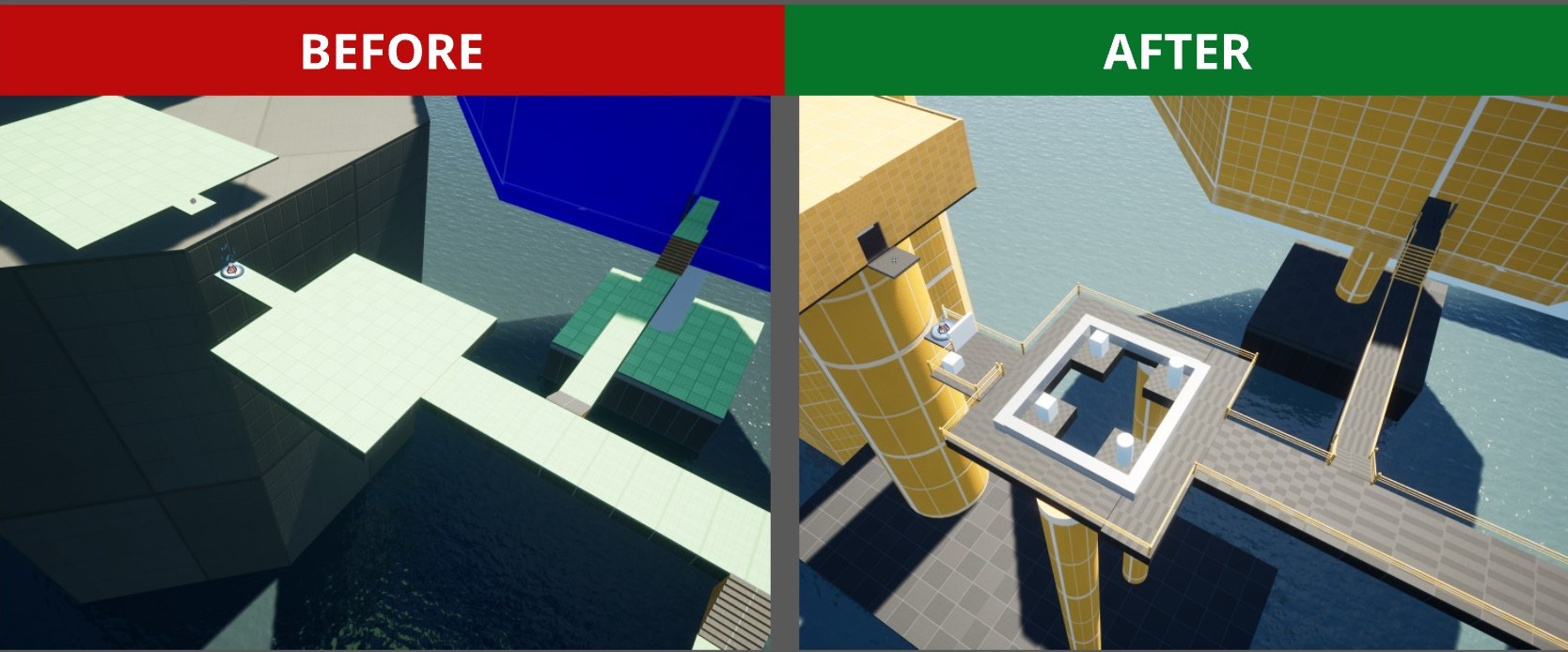
Problem: The combat leading to the final sections of the game lacked challenge.
Solution: Reworked part of the last area—replacing a straight path with one that requires the player to dodge enemy patrols.
Fourth iteration
I decided to revisit my project and refine these key areas.
- Added additional cover alongside routes leading to the main path.
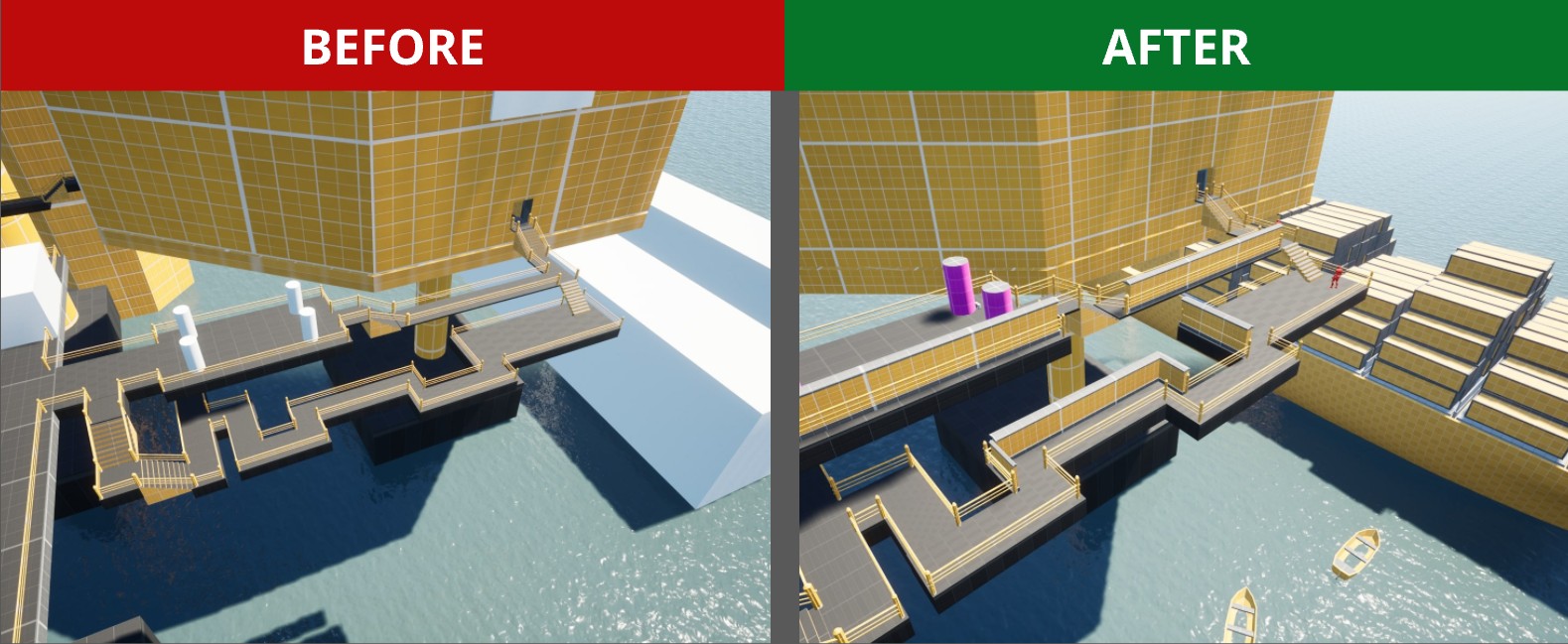
Problem: There wasn’t enough cover in the side areas, causing the player to be spotted easily.
Solution: Added multiple types of cover to give the player more tactical options.
Fifth iteration
- I decided to revisit my project and refine these key areas.
- Increased ammo and weapon variety throughout the level.
- Added a gate in the final section to prevent players from skipping ahead.
- Increased difficulty in the VIP sections
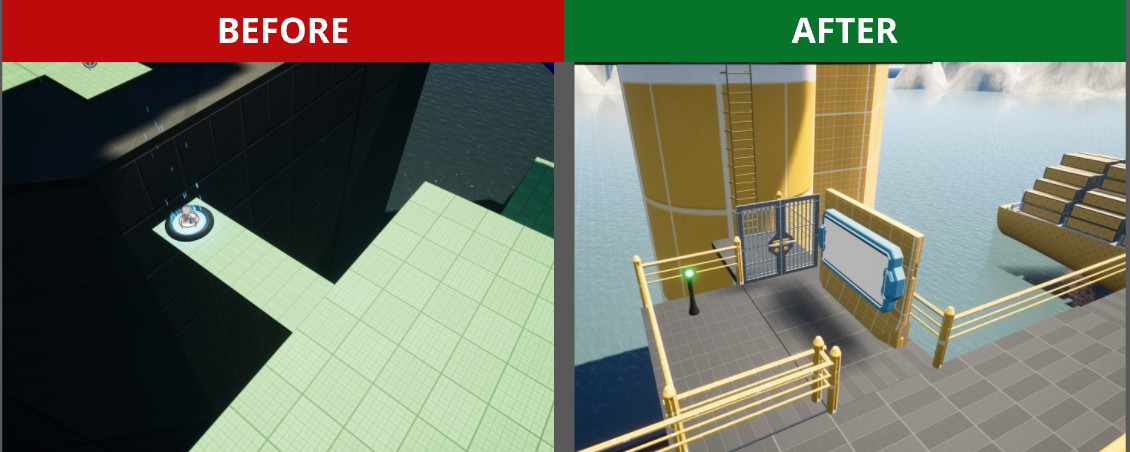
Problem: The combat area lacked immersion and failed to engage the player.
Problem: The player could reach the final part of the level without completing the objective of eliminating the VIPs.
Solution: Added a gate blocking the final area. It can only be unlocked by securing both data points located next to the VIPs.
Sixth iteration
I decided to revisit my project and refine these key areas.
Replaced simple geometry with more detailed level assets.
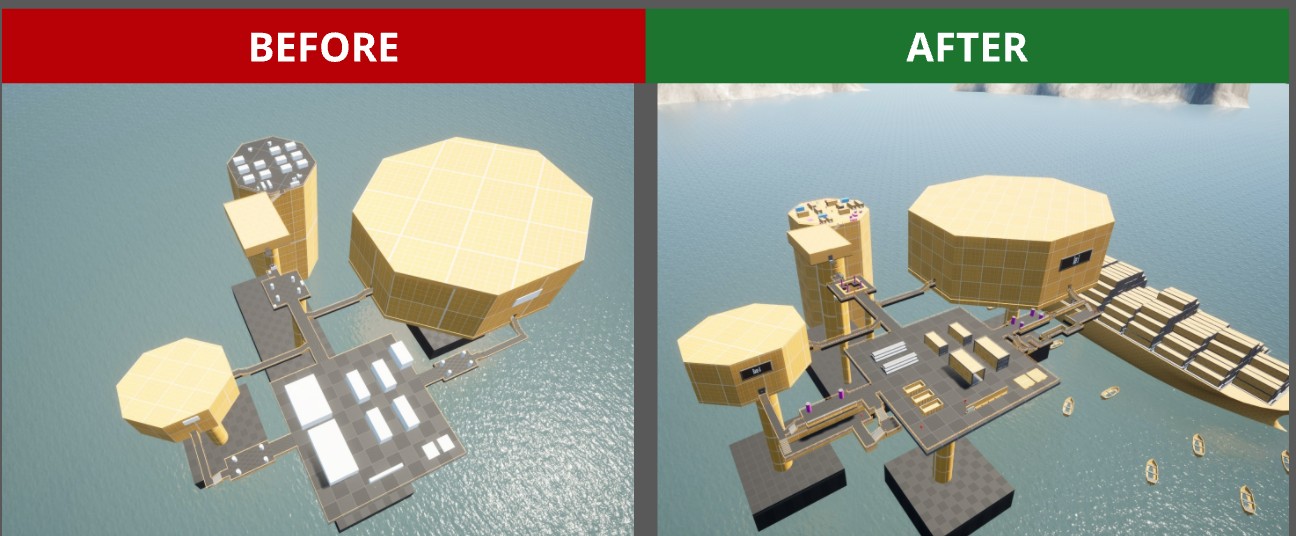
Problem: The beginning of the level felt too simple and lacked variety in both objects and combat difficulty.
Solution: Replaced much of the basic geometry with more complex level design elements to create a more visually interesting and engaging combat space.
Takeaways
Design Decisions and Final Thoughts
When creating this project, I wanted to focus on stealth combat and develop a more engaging story than in my previous projects. Metal Gear Solid 2 served as a major reference point for this work.
I was able to complete this project in under two months, thanks to an efficient game development process I learned from the Level Design Bootcamp. I’ve taken those lessons and built upon them to create my own streamlined design workflow, which has greatly accelerated my development speed. With this process, I can now produce high-quality projects within just one or two months.
After completing this personal project, I plan to take some time to reflect on my decisions and what I’ve learned.
Takeaway 1: Balancing Stealth Combat and “Guns Blazing” Playstyles
Designing a level that supports both stealth and action-oriented gameplay was a challenging yet rewarding experience. I had to carefully balance elements such as ammo placement, weapon variety, and enemy behavior to give players meaningful choices in how they approach combat. This taught me a lot about balancing different playstyles while maintaining engaging level flow.
Takeaway 2: The Benefits of Using Multiple Asset Packs
Over the years, I’ve collected a wide range of both paid and free asset packs. These resources have significantly improved my workflow, allowing me to build unique and varied levels more efficiently. Having access to multiple asset packs has helped me experiment with different aesthetics and environments, ultimately speeding up production without sacrificing creativity.


